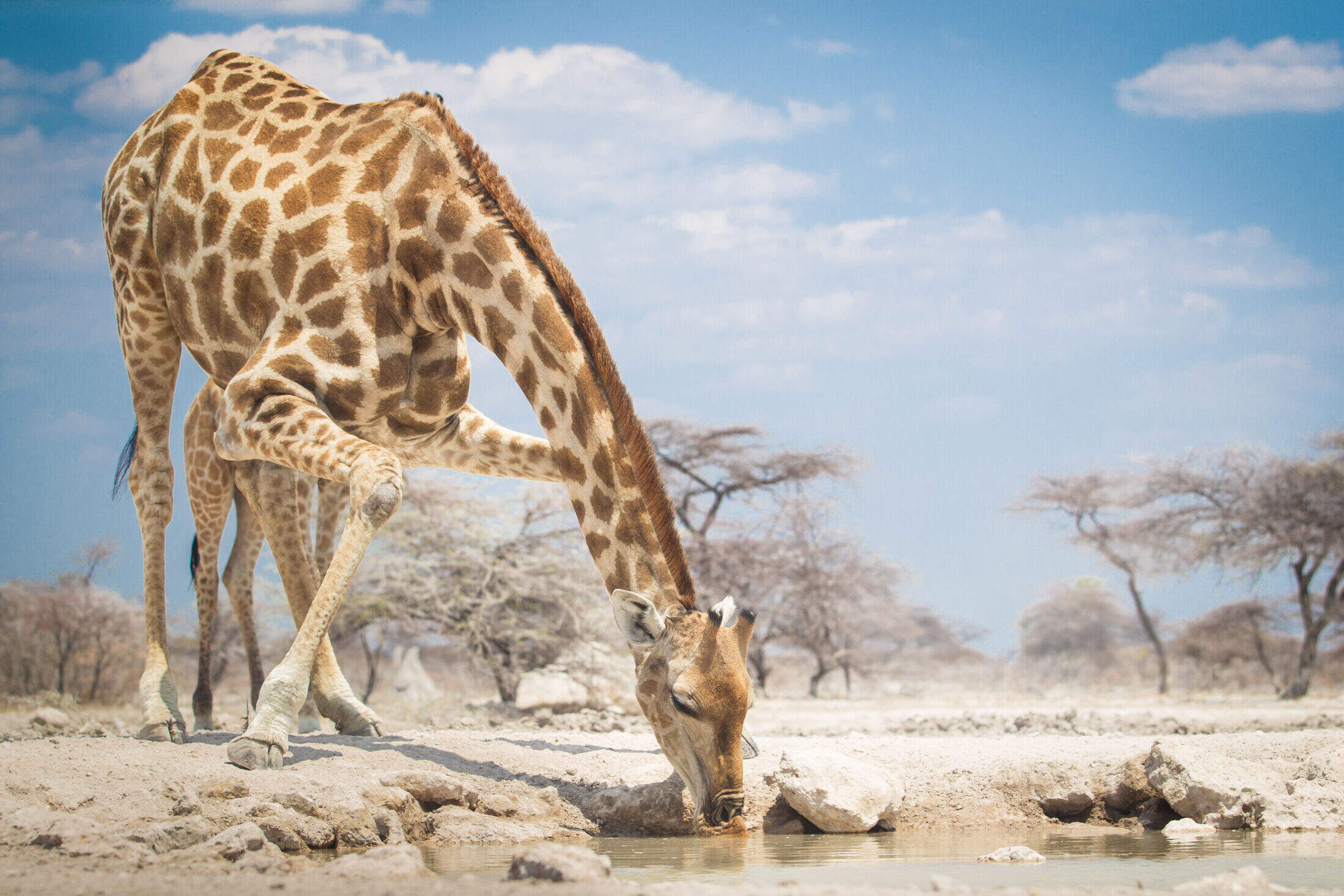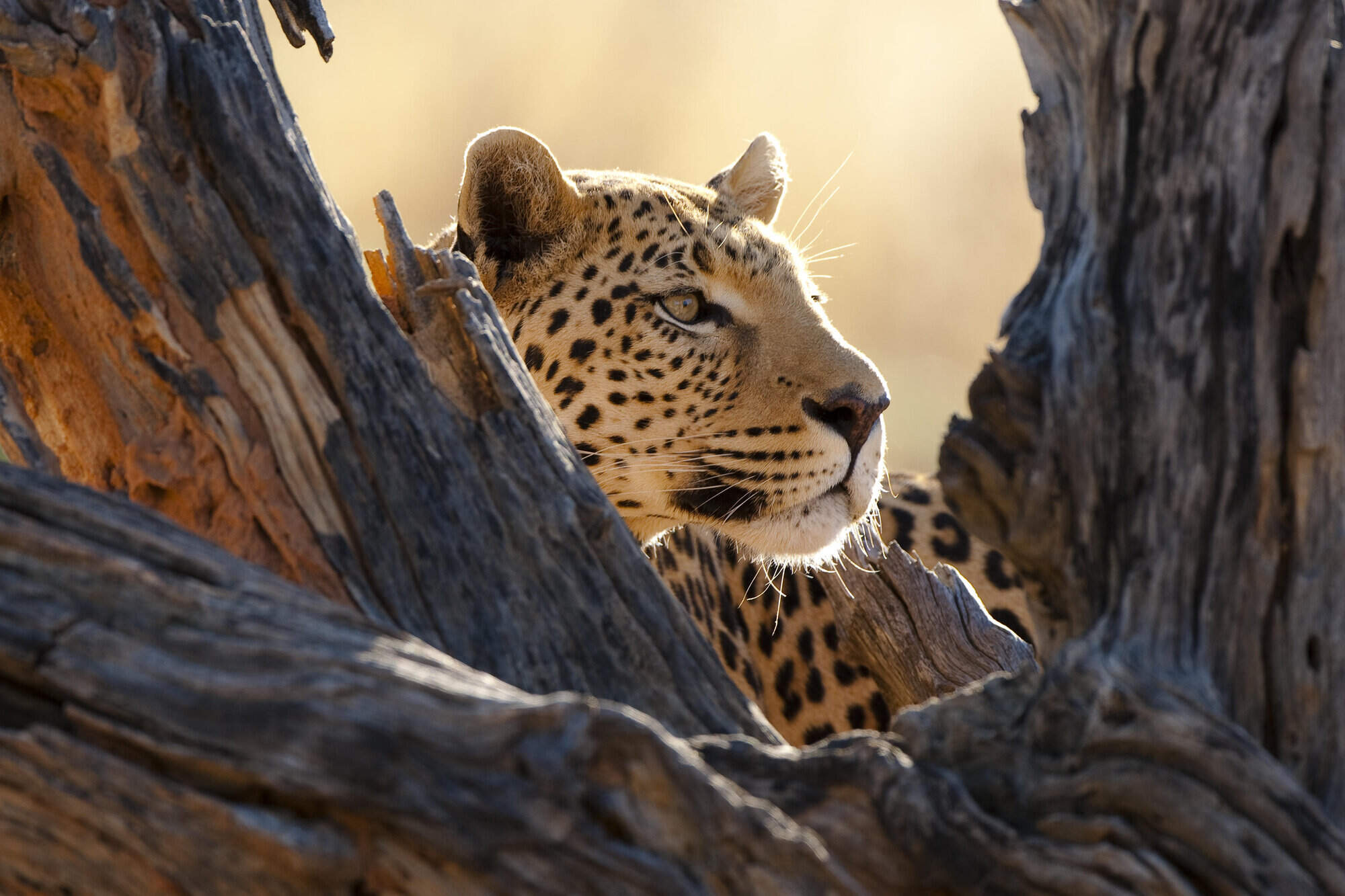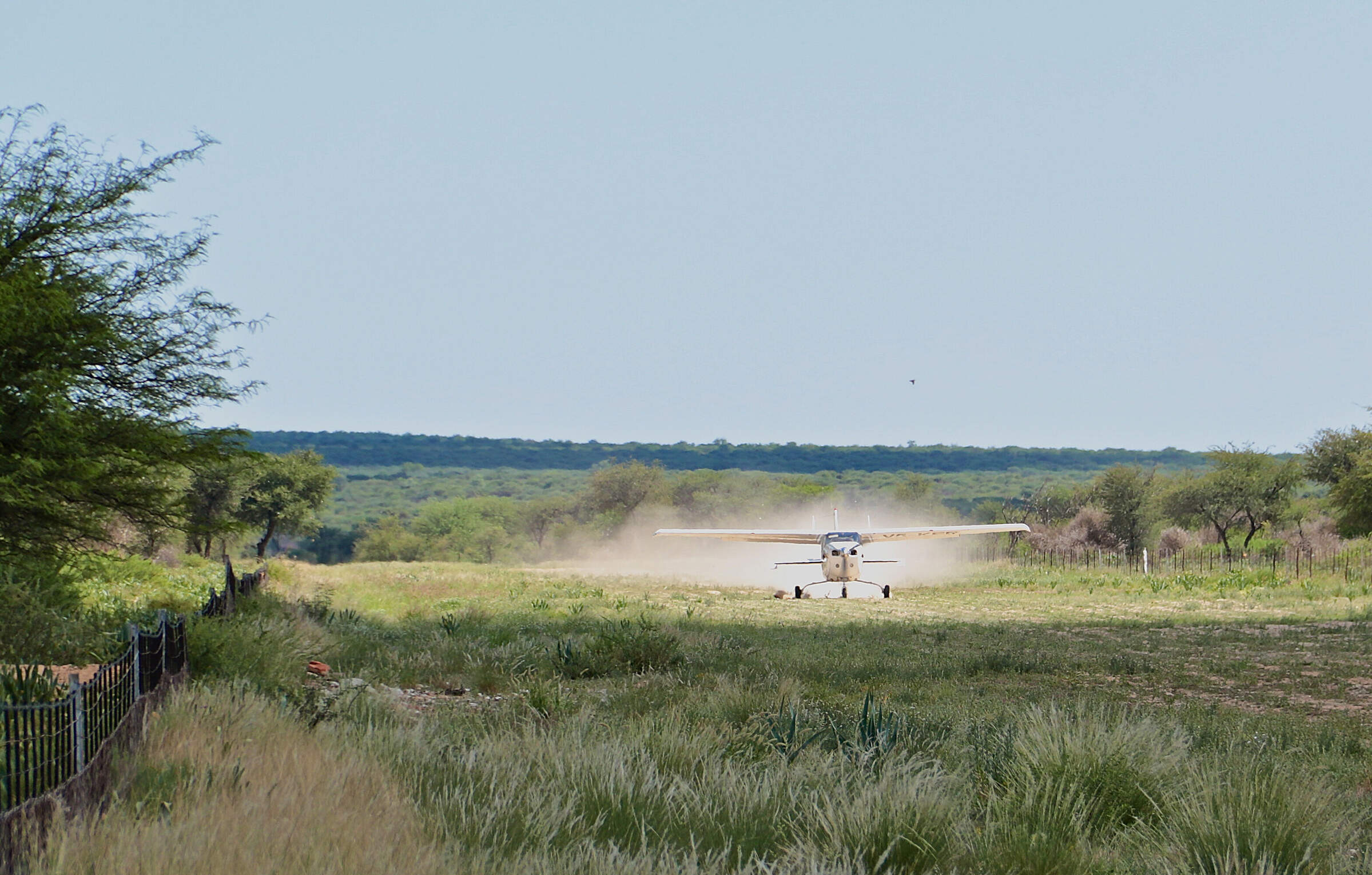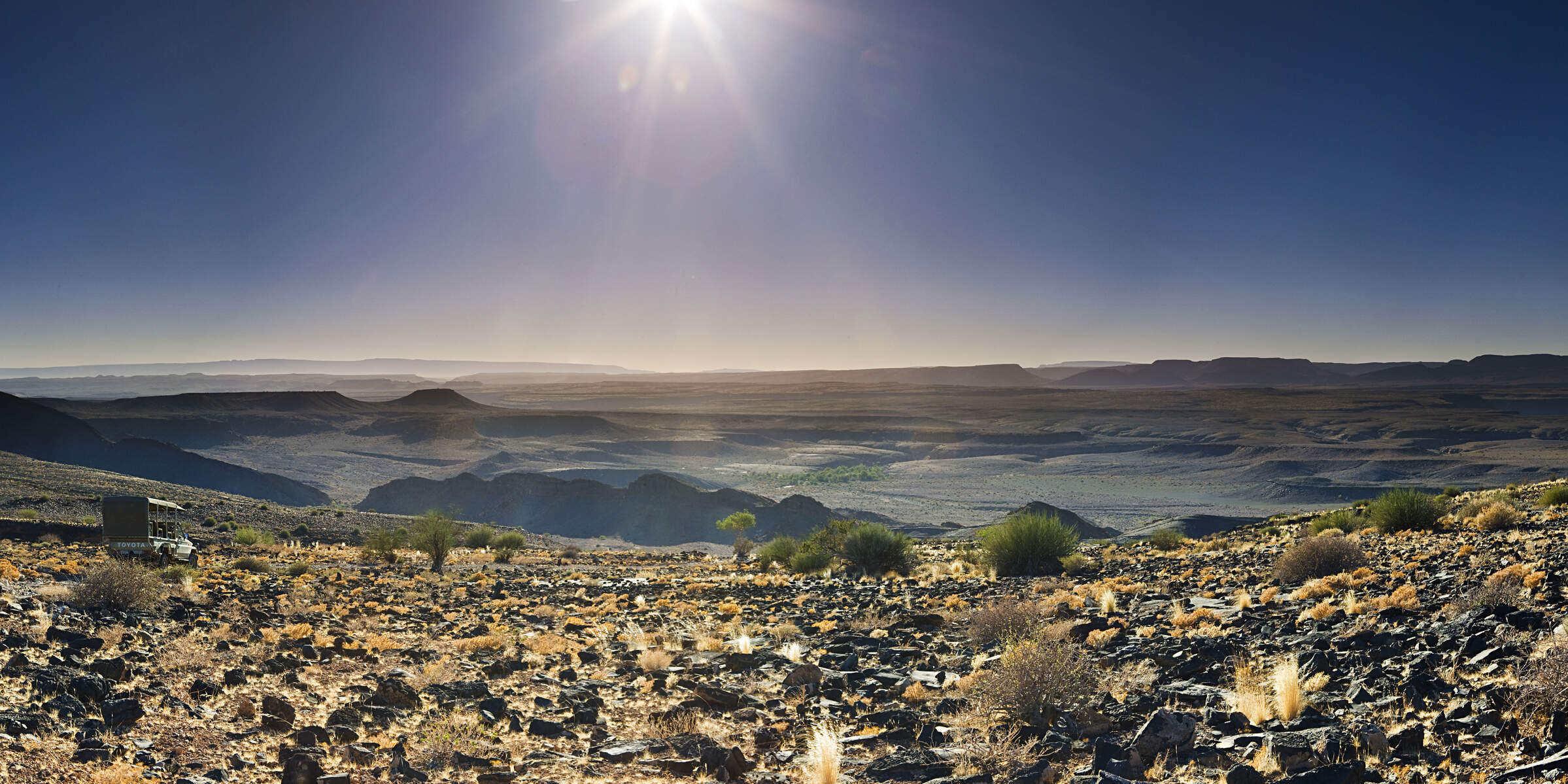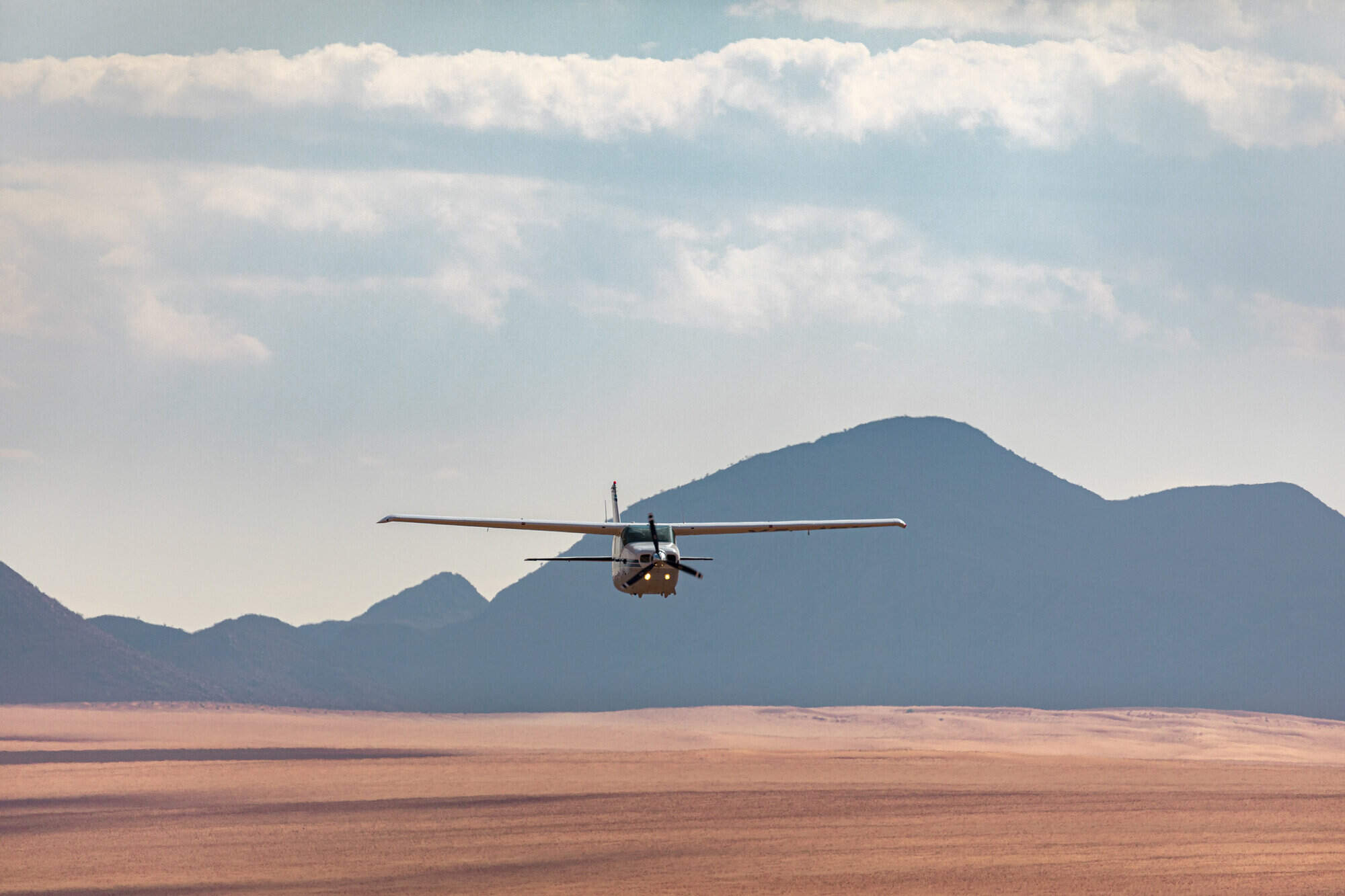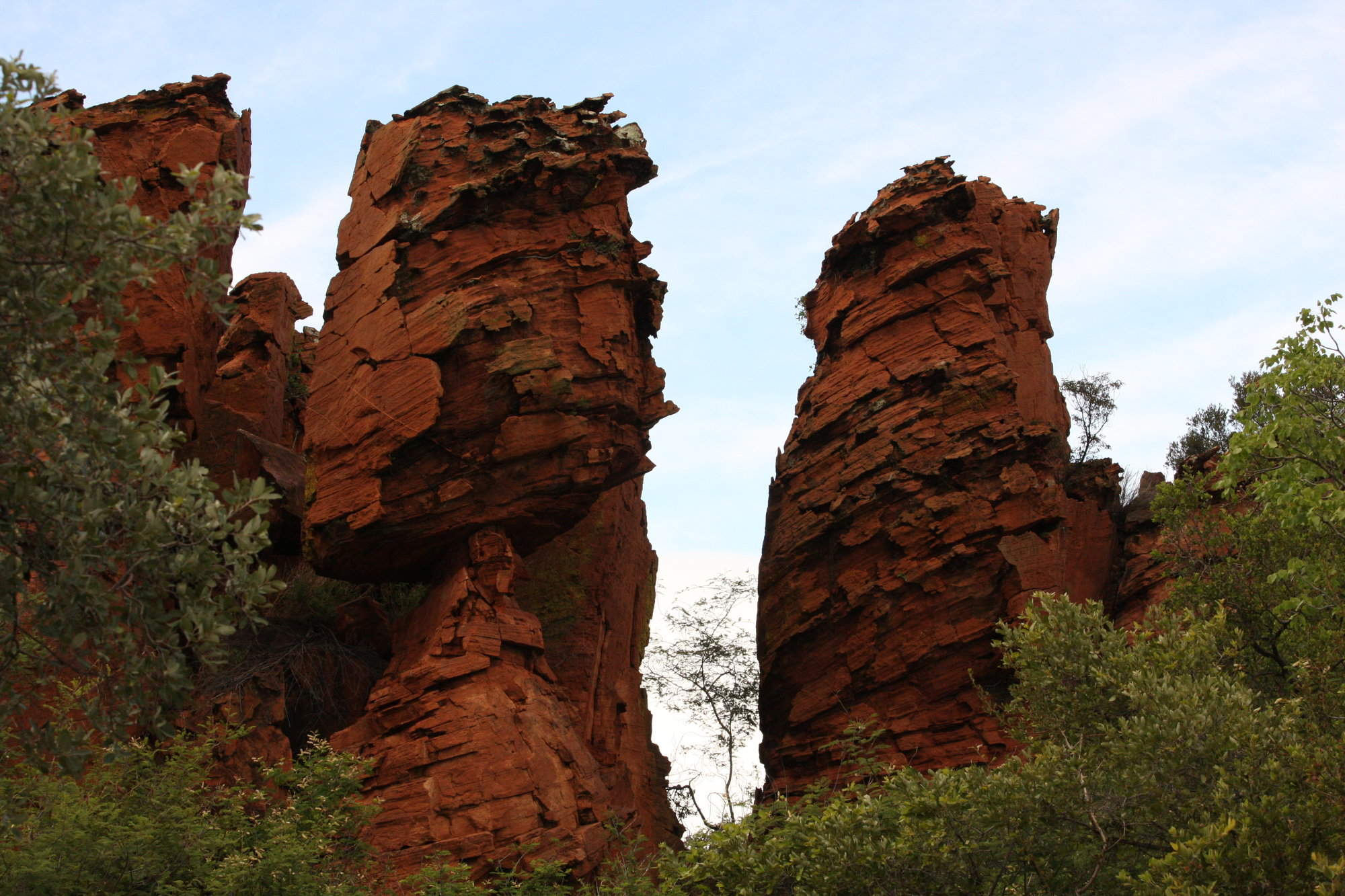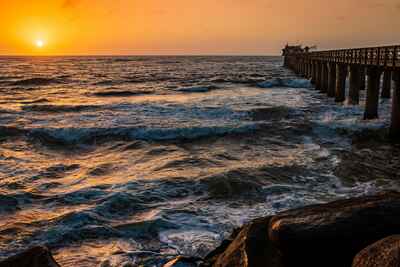
No caption
No caption
No caption
No caption
No caption
be delighted by playful cape fur pups
gentle kayaking with seals bobbing around you
Walvis Bay lagoon attracts lesser and greater flamingos.
an aerial view of the icy cold Atlantic ocean
shipwrecks along Namibia's west coast
spoiled for choice - great seafood restaurants
Swakopmund & Walvis Bay
Swakopmund & Walvis Bay
Comparing Swakopmund and Walvis Bay is like comparing apples and oranges: both are seaside towns, but there the similarity ends.
Their proximity – just 30km apart on the Atlantic coast – and the desert hinterland would suggest otherwise, yet the two places have grown up in very different ways.
Swakopmund has long been a favourite with travellers to Namibia. It may sprawl up the coast, but it is, at heart, a quaint Germanic town whose core architecture harks back to the early 20th century. Museums line its wide streets; craft and antique shops are enticingly tucked away. Purists can indulge in German cuisine, though most settle for beer or coffee and cake – and the big draw is seafood, with plenty of choice from a plethora of excellent restaurants.
With one of very few natural harbours along this coast, Walvis Bay developed as a fishing port, giving it a very different, more workmanlike feel, with relatively few places to stay. But that harbour shelters a beautiful lagoon, which in turn attracts flamingos, pelicans, even dolphins into its waters – making the town a favourite with nature lovers.
While Swakopmund is the perfect jumping off point for the range of adrenalin sports that seem to be constantly evolving in the dunes behind the town, Walvis Bay is ideally located for more natural pursuits, with a 4WD trip to Sandwich Harbour high on the list of attractions. Boat trips from the harbour take visitors out among seals and dolphins – or get closer to the action by kayak, with seals seemingly out to splash you from every angle.
Despite the differences, the edges are blurred by the fringing desert, whose dunes, rare Welwitschia plants, even a “moonscape”, hug the towns’ eastern borders. With excursions such as these – and in reality all activities – easily undertaken from both towns, the choice of where to stay is, at least in part, a matter of style.

Trips visiting Swakop' & Walvis Bay
Just ideas, we'll always tailor-make a trip for you

Pelican Fly & Drive Safari
10 days • 5 locations
WINDHOEK AIRPORT TO WINDHOEK AIRPORT
A unique itinerary visiting the must-see highlights combining the adventure of a classic Namibian self-drive with the ease and spectacular views of a fly-in safari.
US$7,330 - US$8,340 per person

Caracal Self-drive Safari
14 days • 8 locations
WINDHOEK AIRPORT TO WINDHOEK AIRPORT
The quintessential Namibian self-drive adventure exploring the highlights from Sossusvlei and the Namib Desert to Damaraland’s wilderness and a safari in Etosha. A great mix of accommodation and excellent value.
US$3,200 - US$4,010 per person
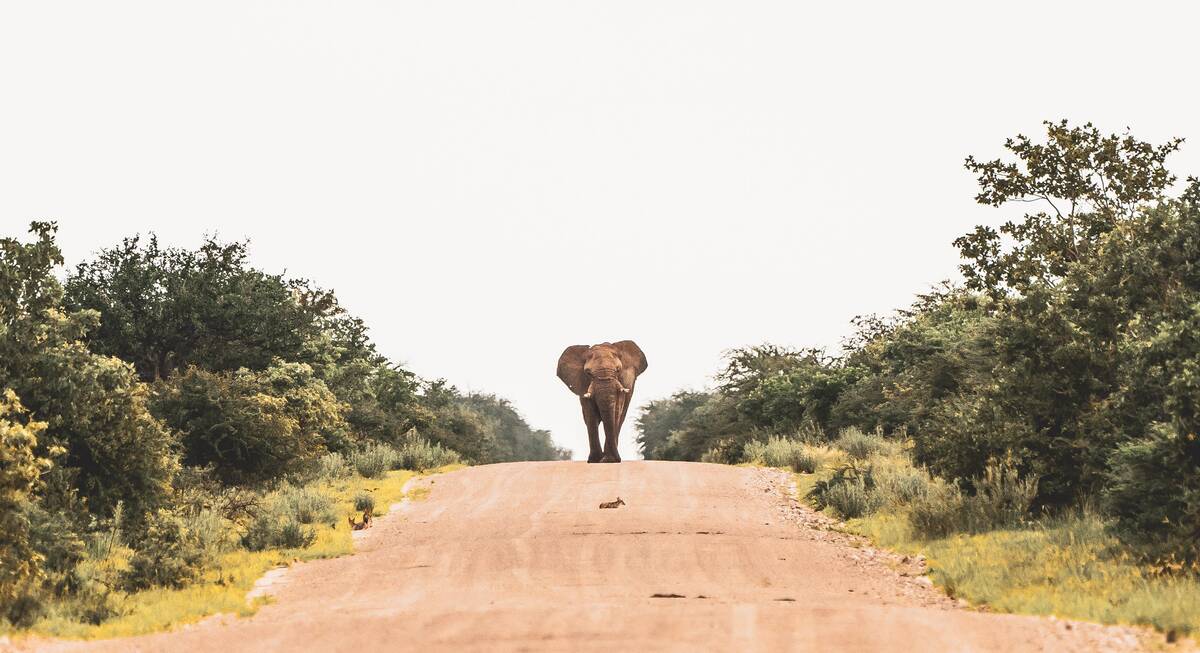
Black Wildebeest Self-drive Safari
19 days • 10 locations
CAPE TOWN AIRPORT TO WINDHOEK AIRPORT
Journey from South Africa’s cosmopolitan Cape Town to central Namibia’s Okonjima Nature Reserve during this self-driven safari. The route passes through a stunning variety of landscapes, offering access to this beautiful continent’s rich diversity.
US$4,030 - US$4,130 per person

Cape Fox Guided Safari
13 days • 7 locations
WINDHOEK AIRPORT TO WINDHOEK AIRPORT
A classic clockwise circuit around Namibia’s northern highlights with a private guide and vehicle. We can’t think of a better way to see more in this timeframe.
US$11,130 - US$12,960 per person

Namaqua Chameleon Self-drive
12 days • 7 locations
WINDHOEK AIRPORT TO WINDHOEK AIRPORT
A classic 12-night self-drive adventure around the highlights of eastern and northern Namibia taking in Sossusvlei, Swakopmund, Damaraland, Etosha and a final stop at Okonjima. Comfortable lodges and great value.
US$3,940 - US$4,990 per person
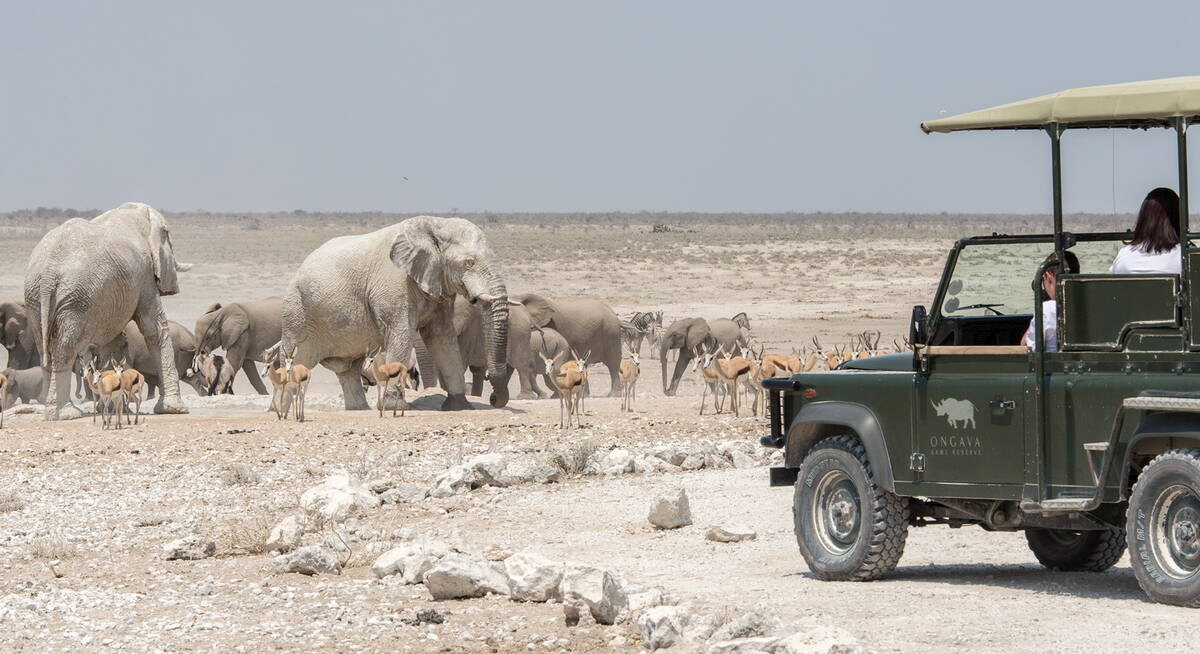
Brown Hyena Self-drive
14 days • 8 locations
WINDHOEK AIRPORT TO WINDHOEK AIRPORT
The perfect trip for those who want to mix the adventure and freedom of a self-drive with some of our favourite luxury camps in Namibia and a great mix of activities.
US$8,710 - US$9,610 per person
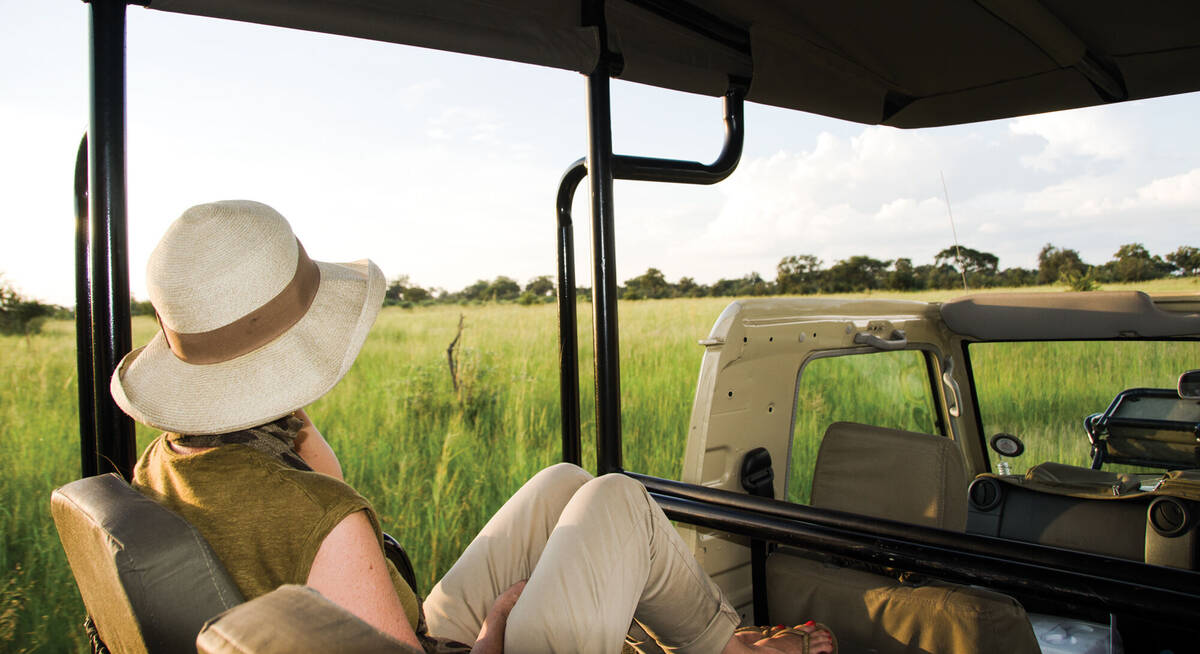
Rock Hare Self-drive Safari
20 days • 12 locations
WINDHOEK AIRPORT TO VICTORIA FALLS AIRPORT
An in-depth look at Namibia from the Namib Desert to the Caprivi, with additional stops in Botswana and Victoria Falls. This three-week adventure includes an unrivalled mix of environments and is great value.
US$7,230 - US$8,170 per person

Quiver Tree Self-drive Safari
14 days • 7 locations
WINDHOEK AIRPORT TO WINDHOEK AIRPORT
An offbeat Namibian self-drive adventure exploring the epic Fish River Canyon and fascinating Kolmanskop ghost town in the south, before turning north via the classic highlights of Sossusvlei, Swakopmund and Damaraland.
US$3,370 - US$3,570 per person
Most recent reviews of our trips to Swakop' & Walvis Bay
Click below to browse all 935 reviews from Swakopmund & Walvis Bay. All from our travellers; all are in full & unedited.
Arrived 22 Dec 2024, 14 nights
"Namib Desert, Damaraland, Etosha self-drive"
Overall rating: Excellent
Arrived 15 Dec 2024, 16 nights
"My Dec 2024 trip"
Overall rating: Excellent
Arrived 7 Dec 2024, 12 nights
"My Dec 2024 trip to Namibia"
Overall rating: Excellent
Arrived 20 Oct 2024, 20 nights
"My Oct 2024 trip"
Overall rating: Excellent
Arrived 19 Oct 2024, 17 nights
"My Oct 2024 trip"
Overall rating: Excellent
Arrived 13 Oct 2024, 15 nights
"My Oct 2024 trip"
Overall rating: Excellent
Arrived 9 Oct 2024, 15 nights
"My Oct 2024 trip"
Overall rating: Excellent
Arrived 6 Oct 2024, 17 nights
"My Oct 2024 trip"
Overall rating: Excellent
Arrived 2 Oct 2024, 18 nights
"My Oct 2024 trip"
Overall rating: Excellent
Arrived 28 Sep 2024, 14 nights
"My Sep 2024 trip"
Overall rating: Excellent
Where to stay in Swakop' & Walvis Bay
Our suggestions for places to stay in Swakopmund & Walvis Bay
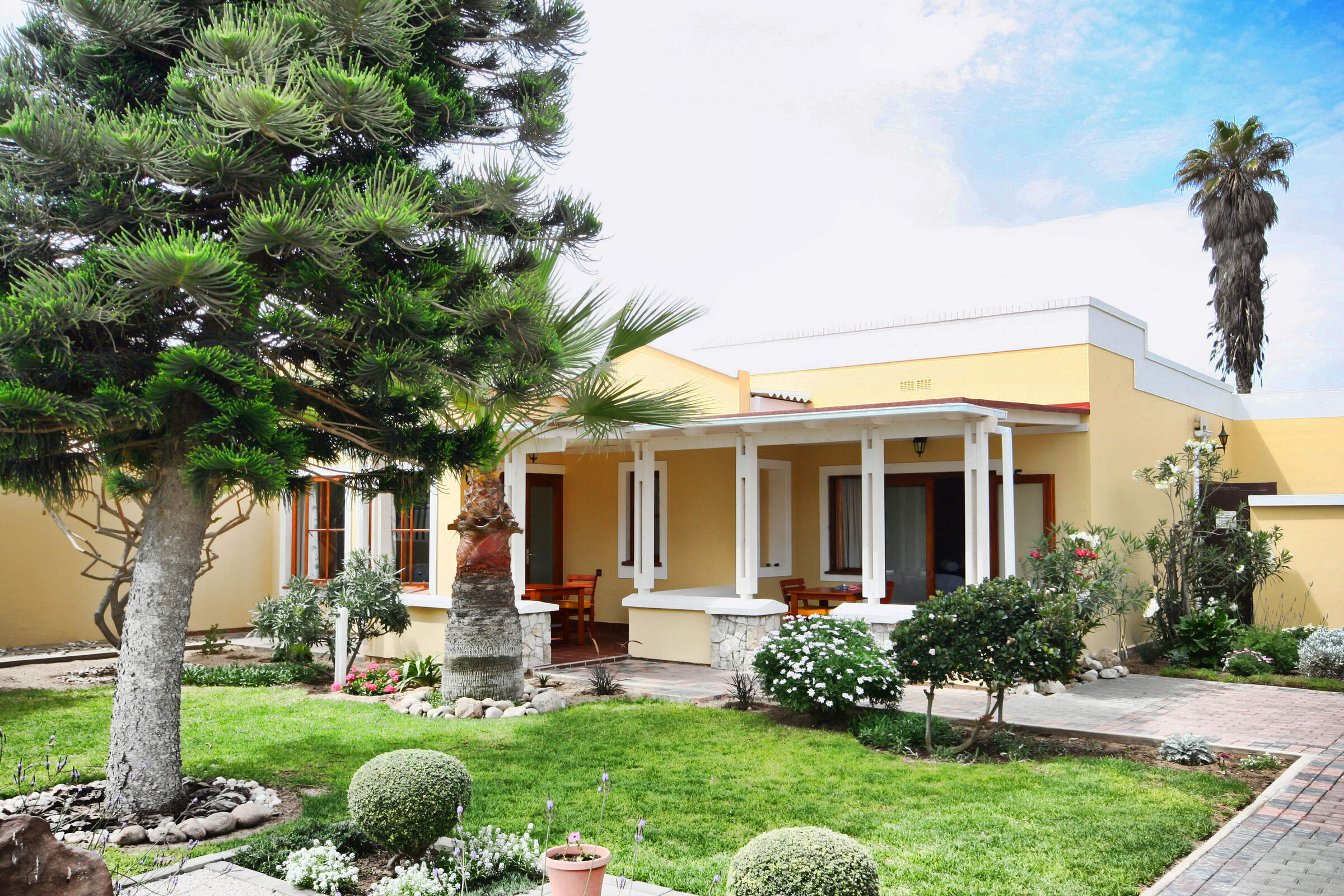
Cornerstone Guesthouse
Cornerstone Guesthouse is a small friendly B&B in a peaceful residential area. It's just a short walk from Swkopmund's waterfront & amenities.
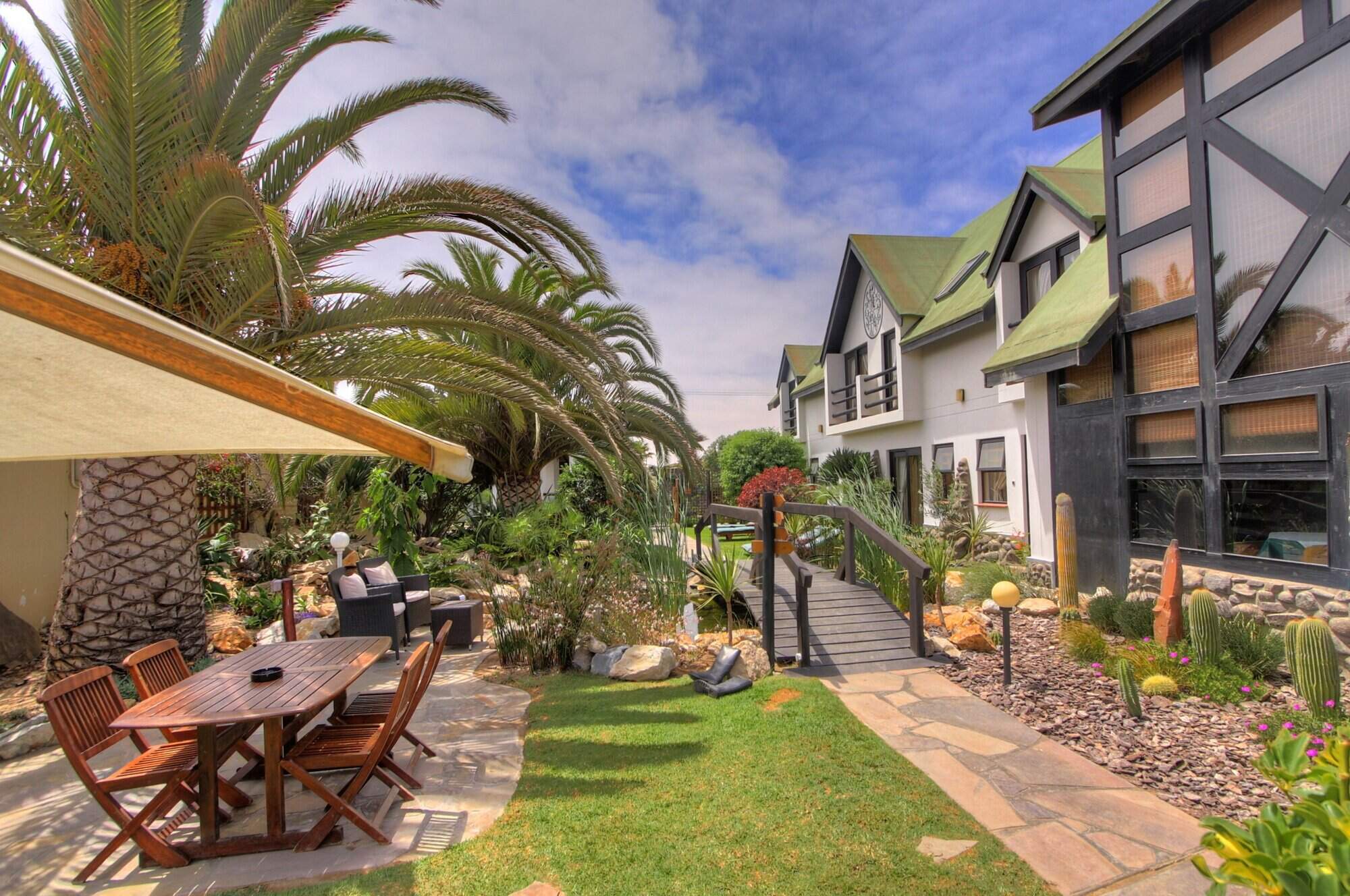
Sam's Giardino
Welcoming, professionally run, and mildly eccentric, Sam’s Giardino lifts the level of hospitality in Swakopmund to unusual heights.
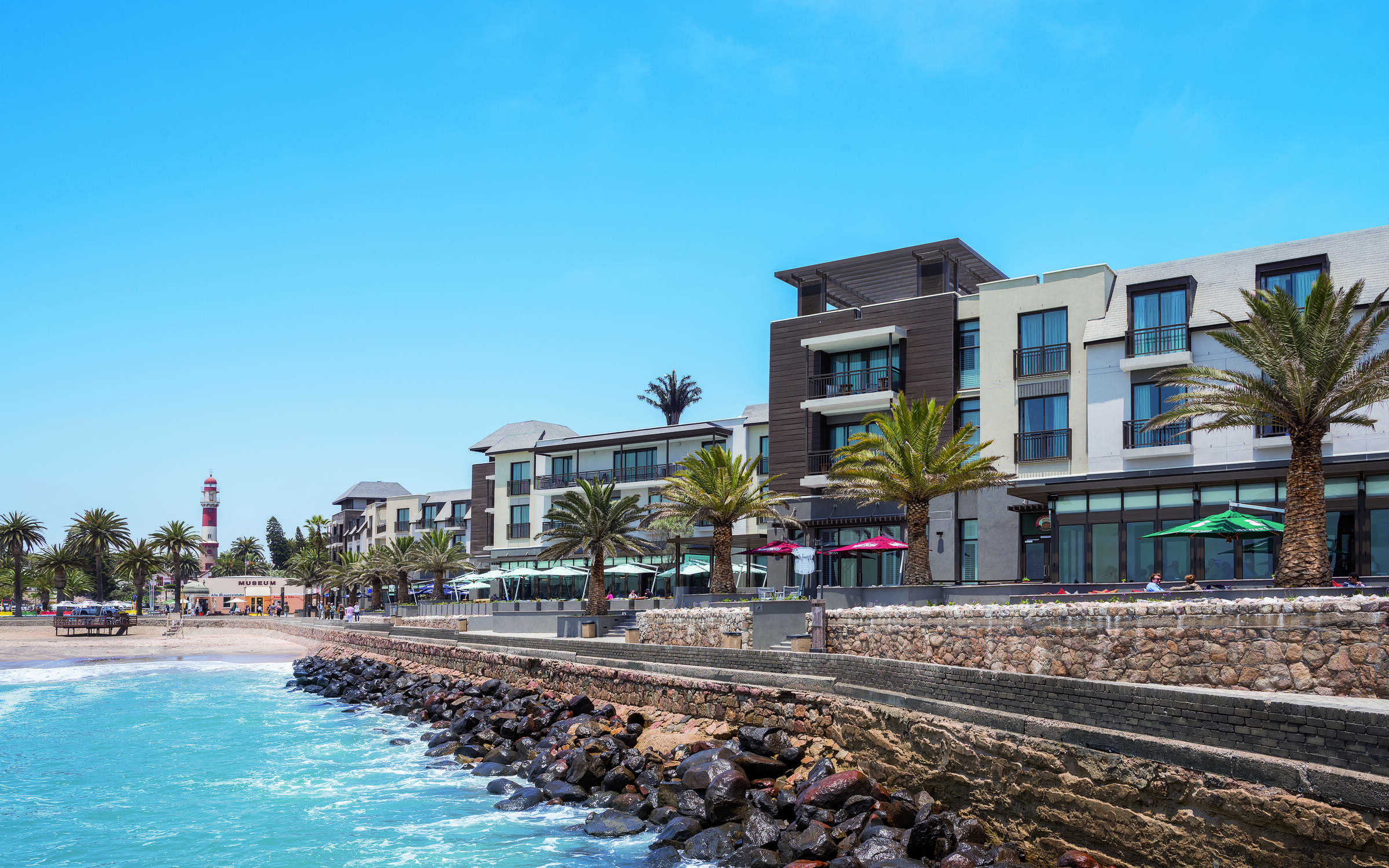
Strand Hotel
One of the larger hotels in Swakopmund, the Strand is well-placed on the seafront with good access to restaurants and the centre of town.
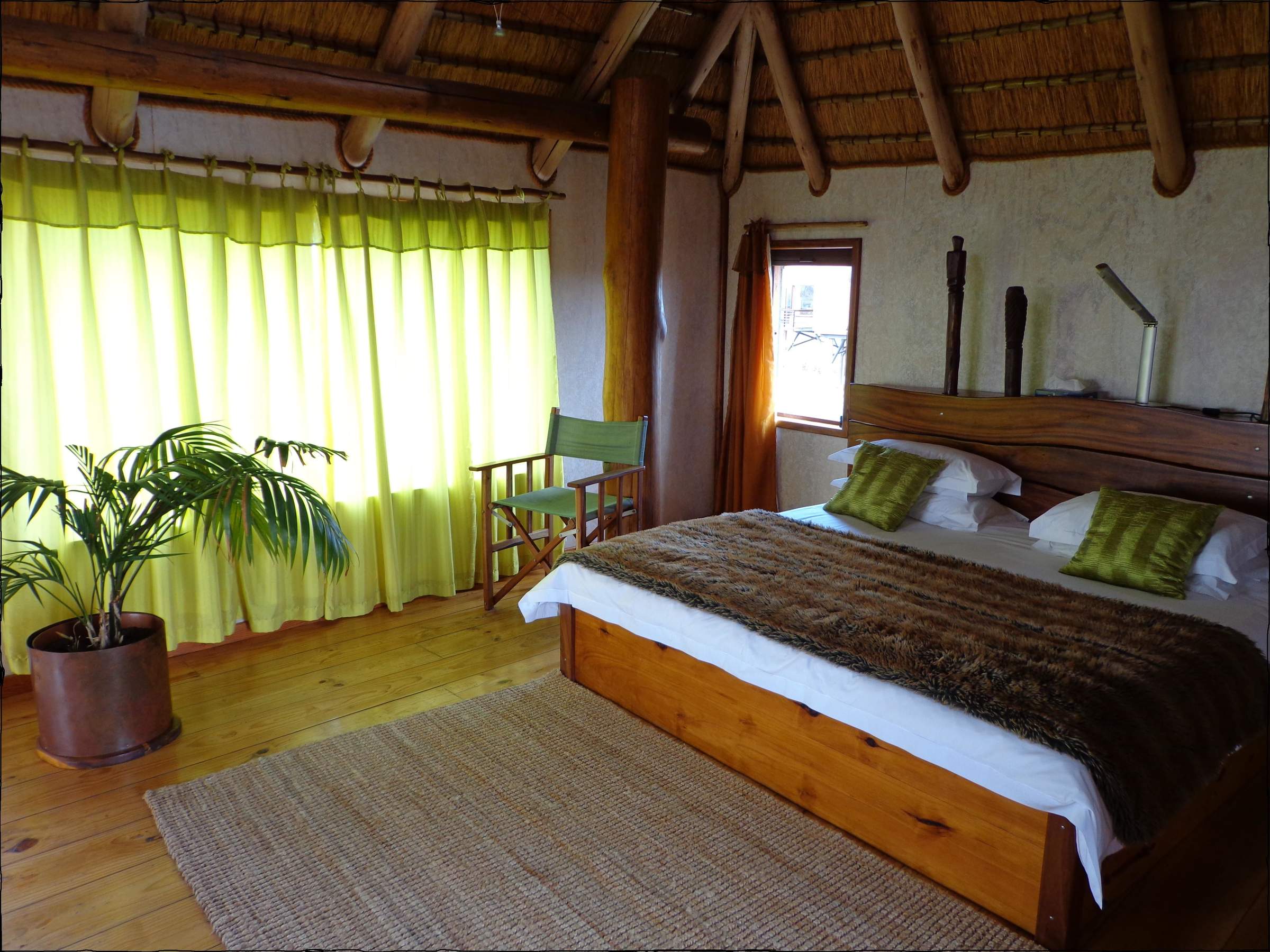
The Stiltz
Not your typical guesthouse, The Stiltz occupies a glorious location over the Swakop River on the edge of Swakopmund.
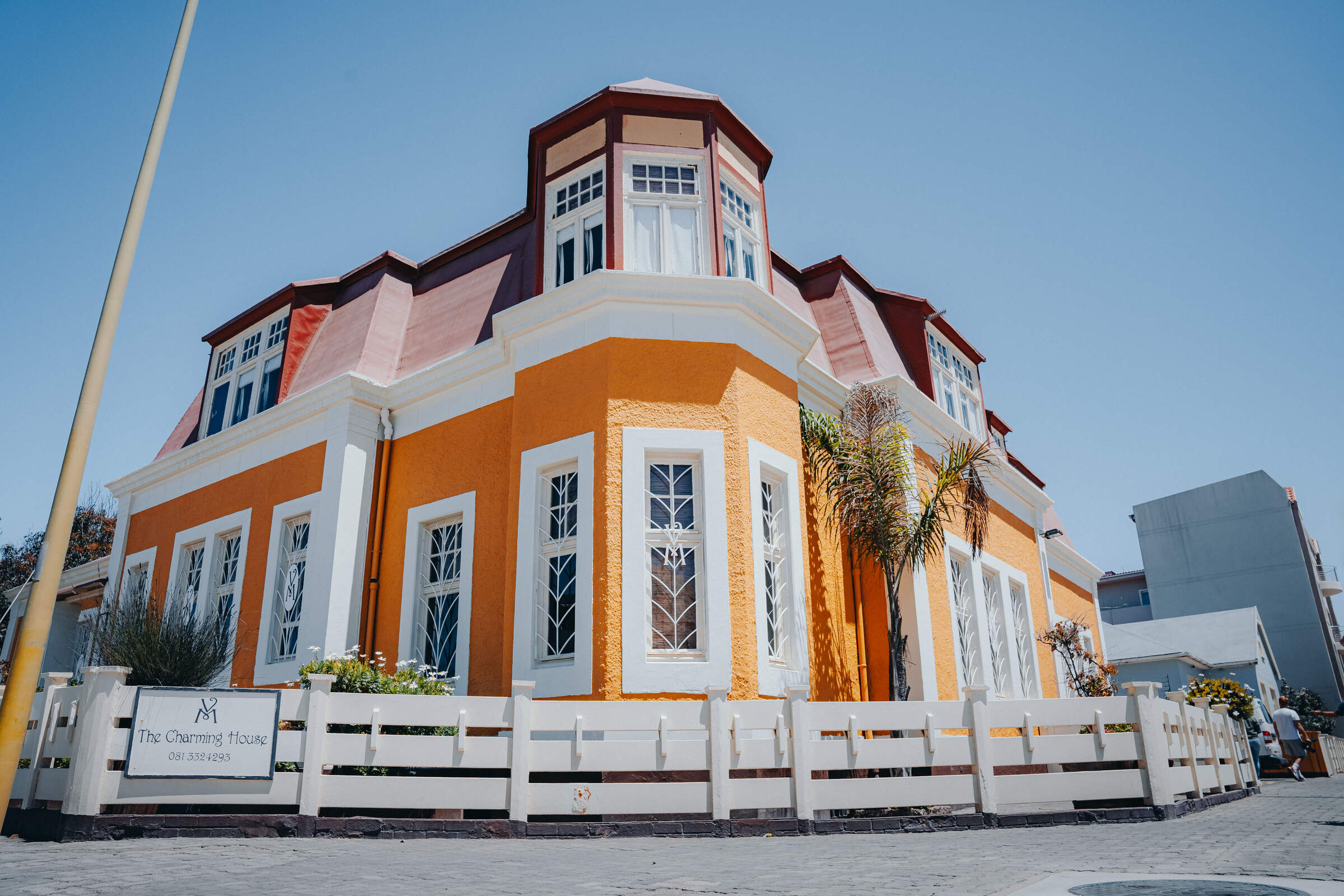
Villa Margherita
Villa Margherita is a beautifully renovated B&B in the heart of Swakopmund, with comfortable, well-appointed rooms, and friendly and attentive staff.
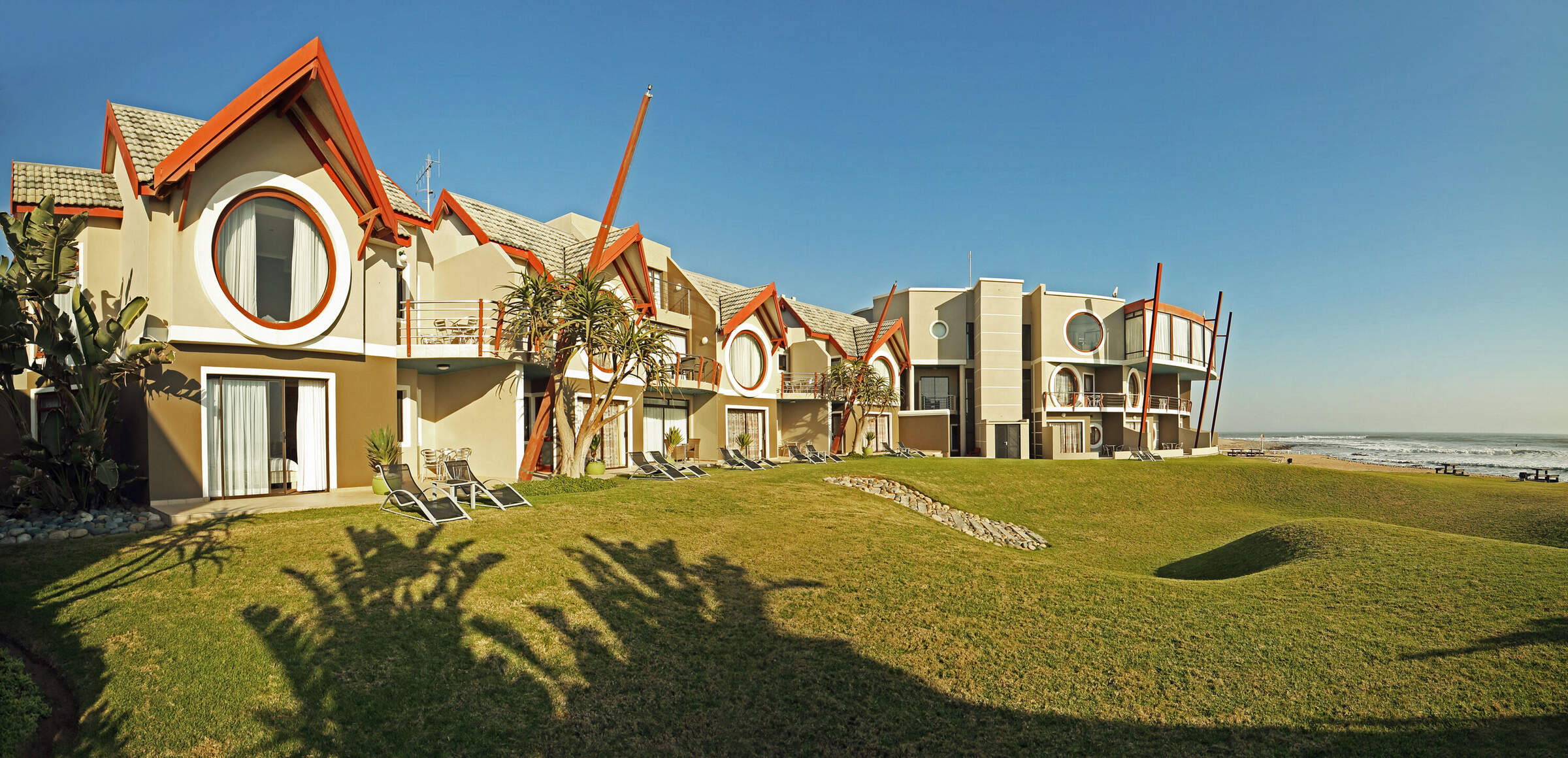
Beach Lodge
Right on the sea front, Beach Lodge offers good standard accommodation and its own restaurant, 15 minutes’ drive from Swakopmund.
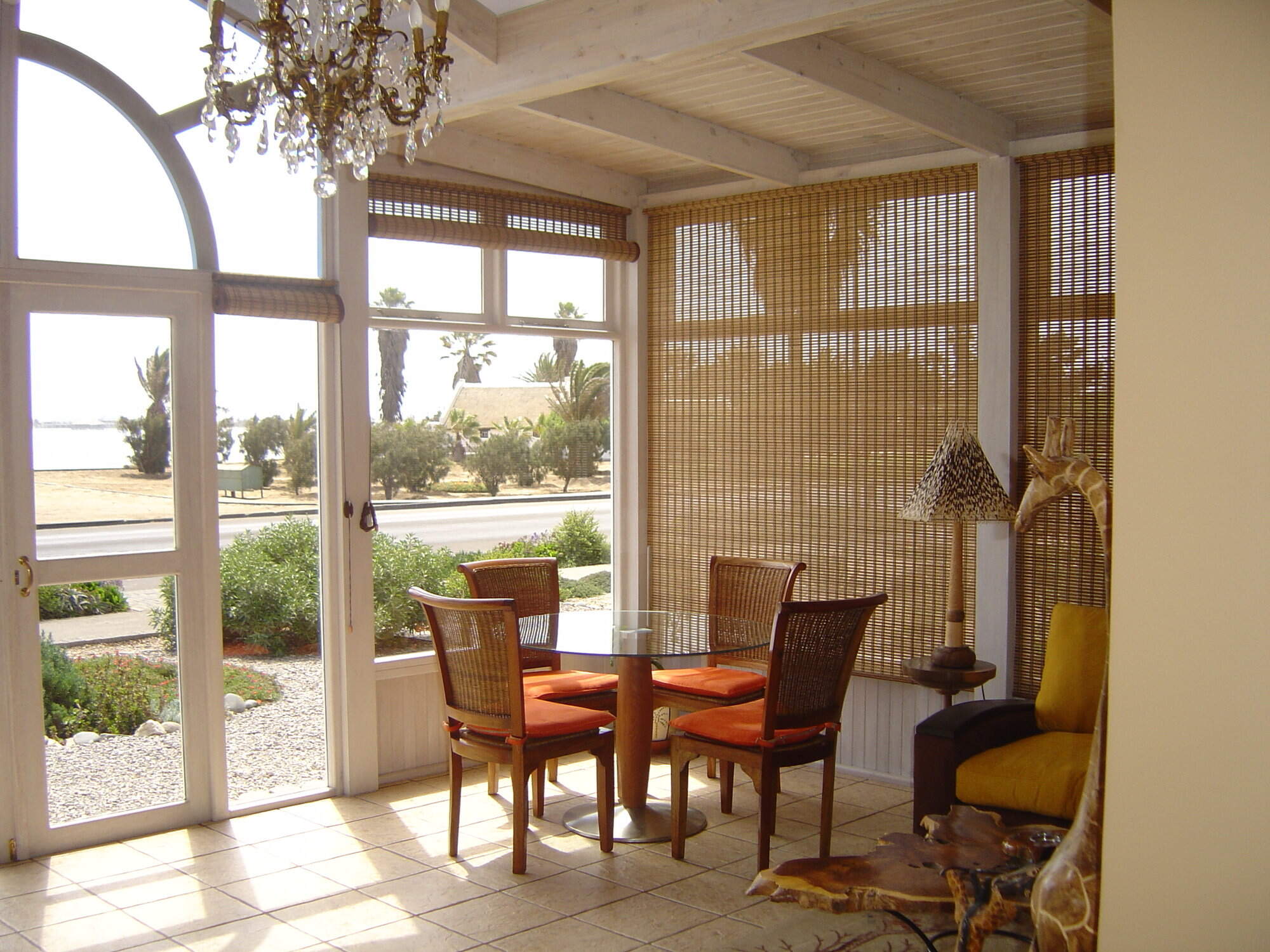
Lagoon Lodge
Lagoon Lodge is a quirky little guesthouse located right on the edge of Walvis Bay Lagoon, a good spot for watching the flamingoes that frequent the area.
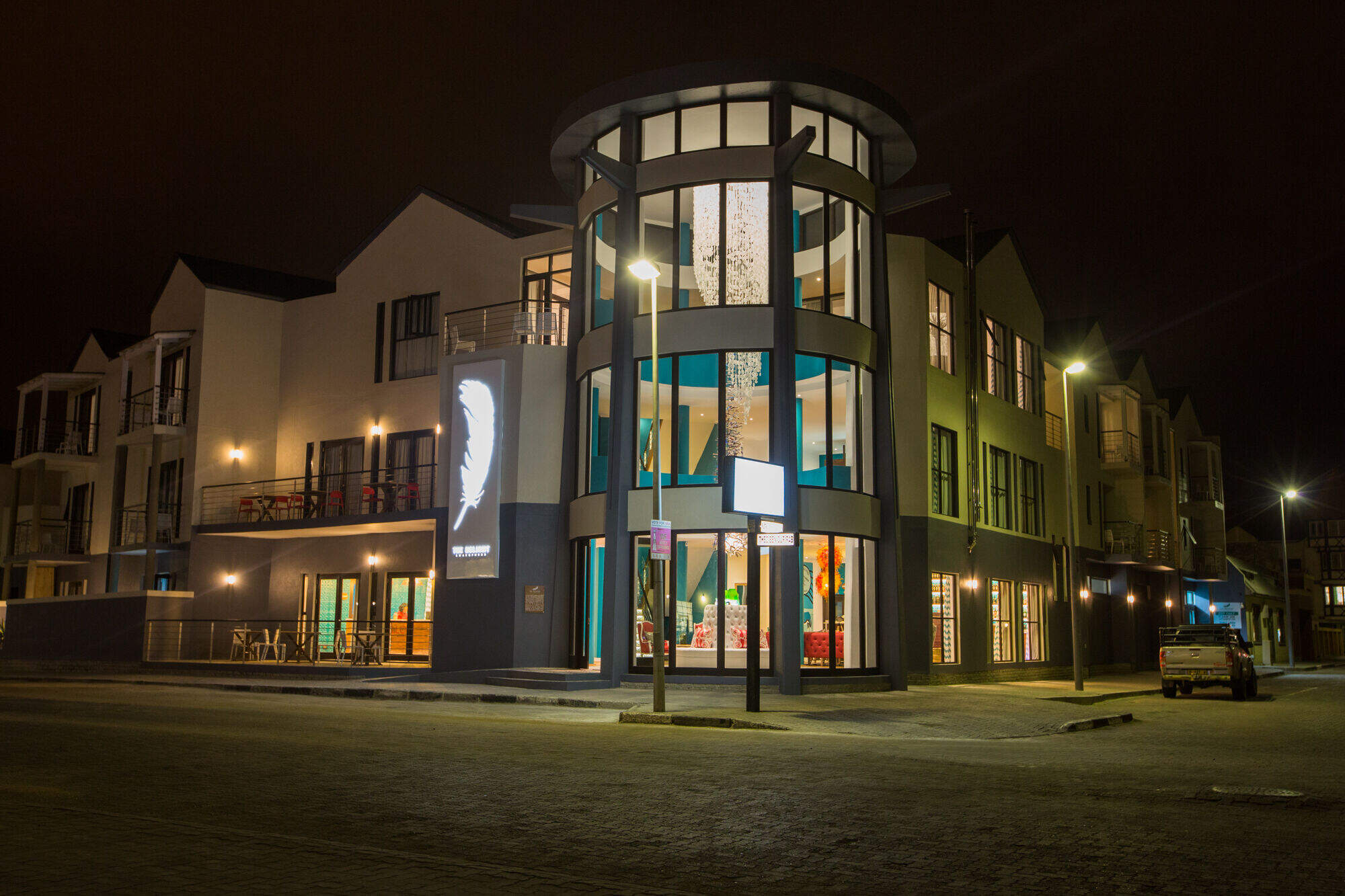
The Delight
Colourful and contemporary in style, The Delight is a relatively large hotel within a short walk of Swakopmund's waterfront, restaurants and main attractions.
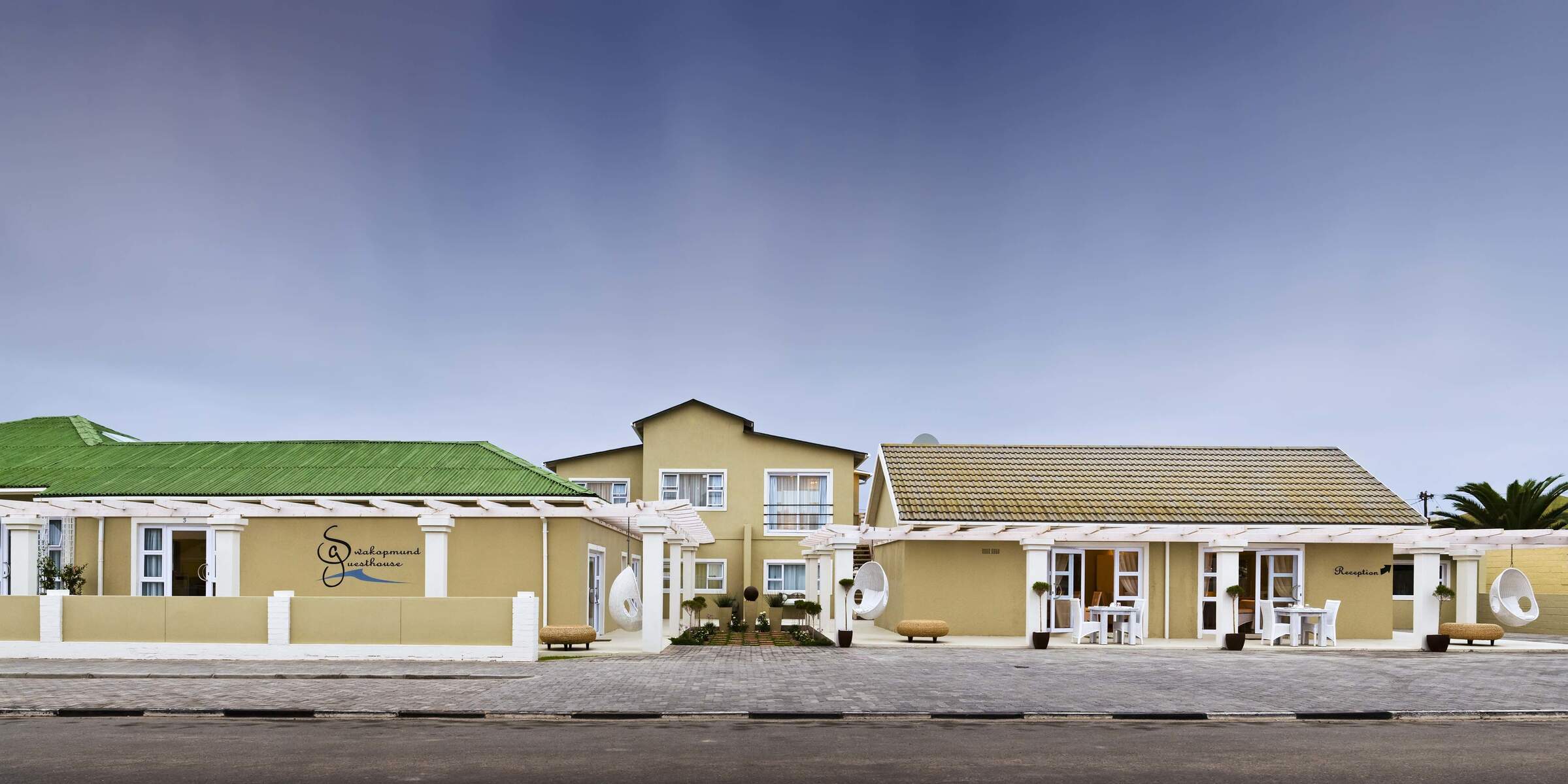
Swakopmund Guesthouse
Swakopmund Guesthouse is a family-run B&B, boasting comfortable and high-quality rooms with a maritime touch.
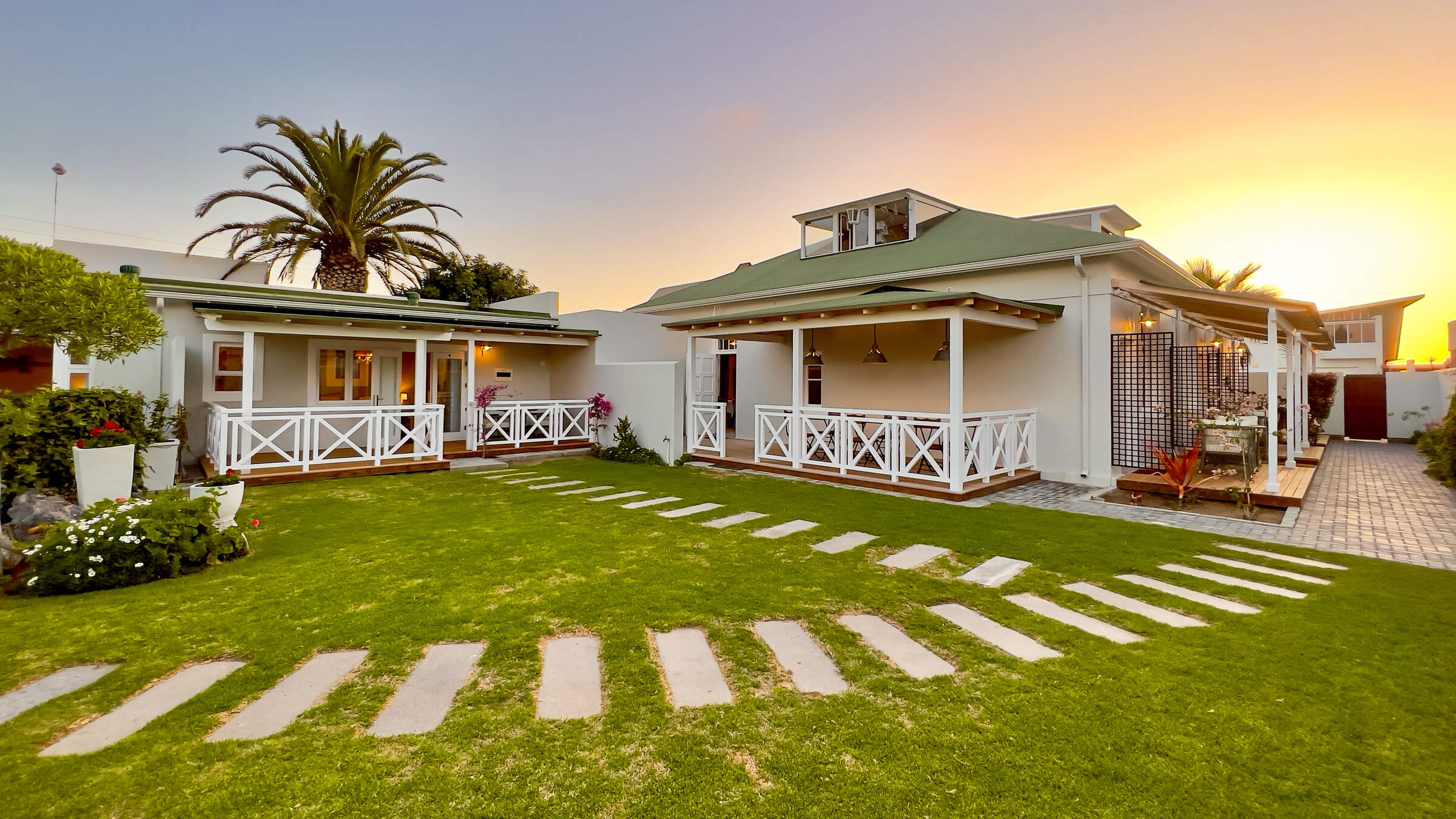
Brigadoon
In a quiet residential location, Brigadoon is conveniently located for the Swakopmund waterfront and amenities.
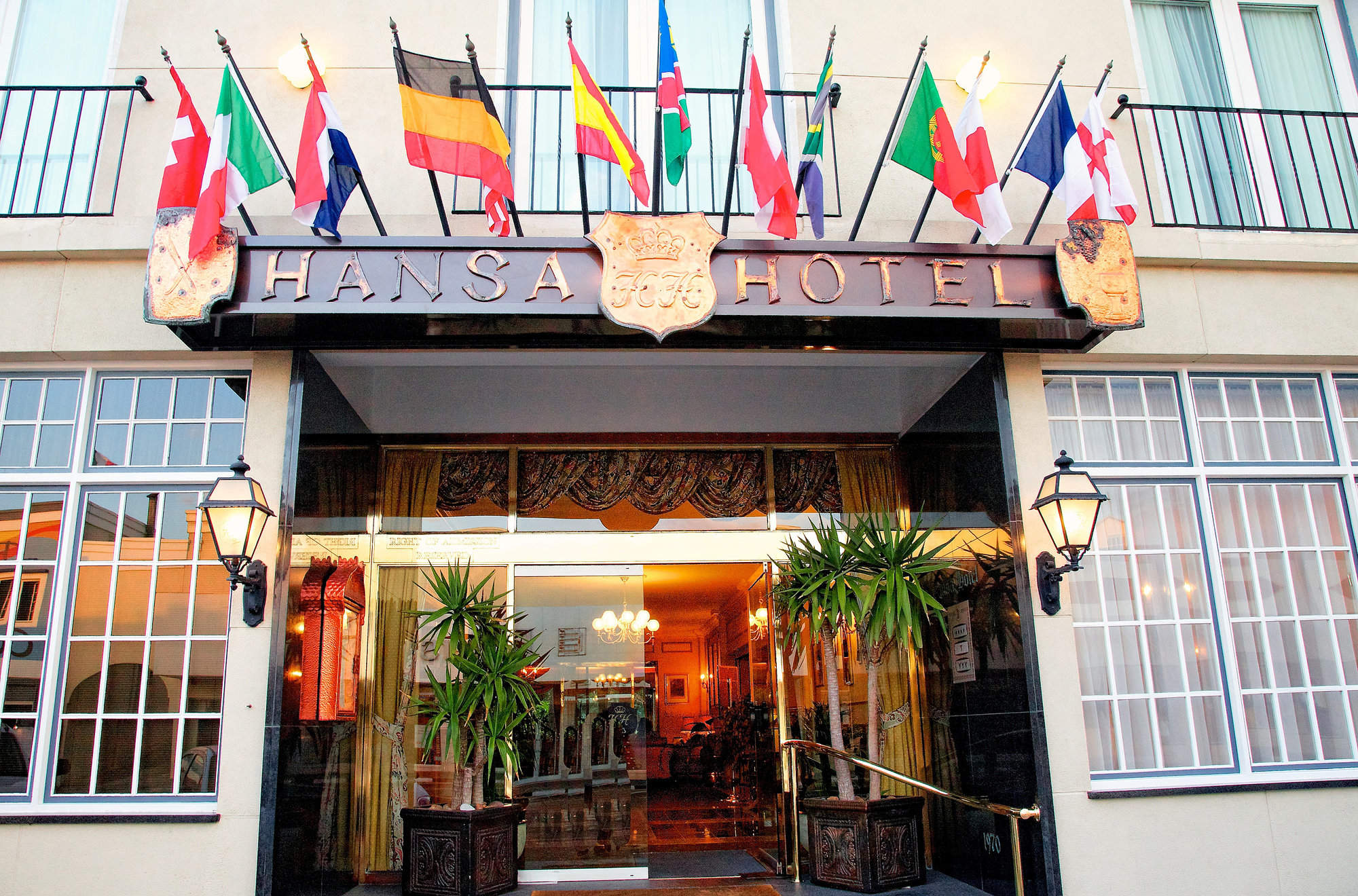
Hansa Hotel
With a very central location in Swakopmund, the traditional Hansa Hotel is reliably good, though it is quite formal.
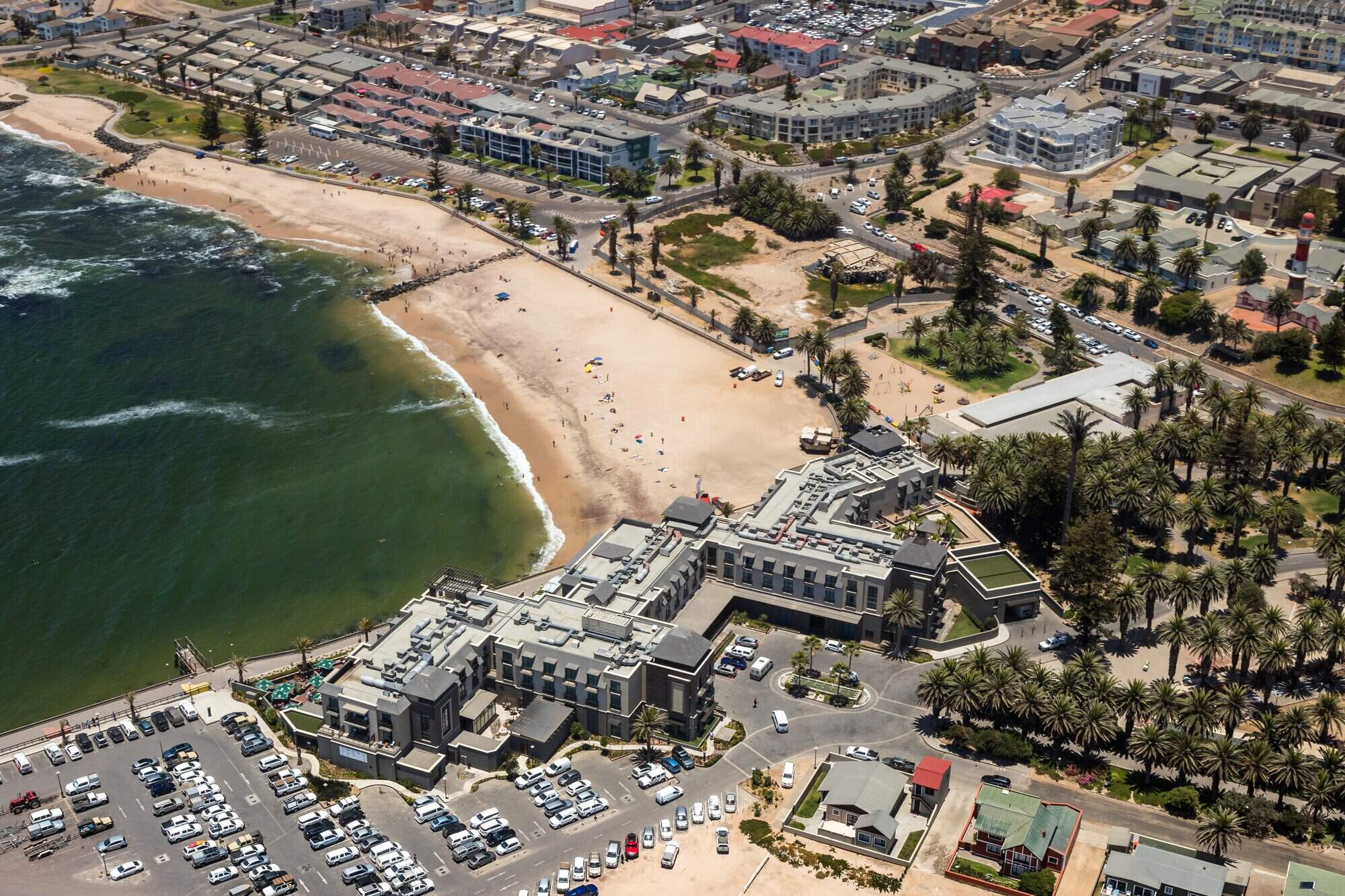
Secret Garden
Secret Garden Guesthouse is well located in the centre of Swakopmund not far from the sea. With a seaside feel, it has its own small restaurant and bar.
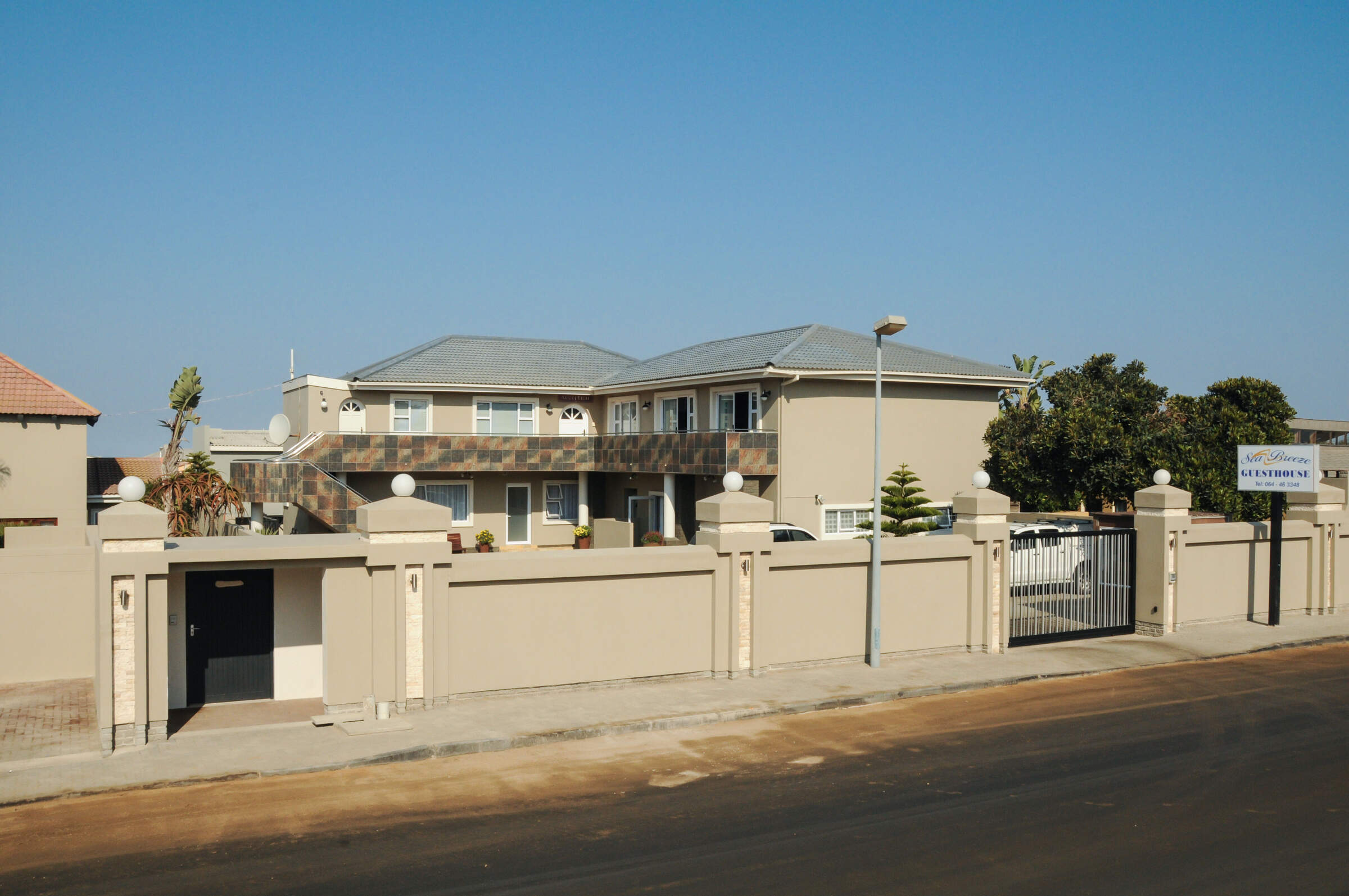
Sea Breeze
Just north of Swakopmund, the delightful Sea Breeze Guesthouse is bright and well-looked after with welcoming and helpful owners.
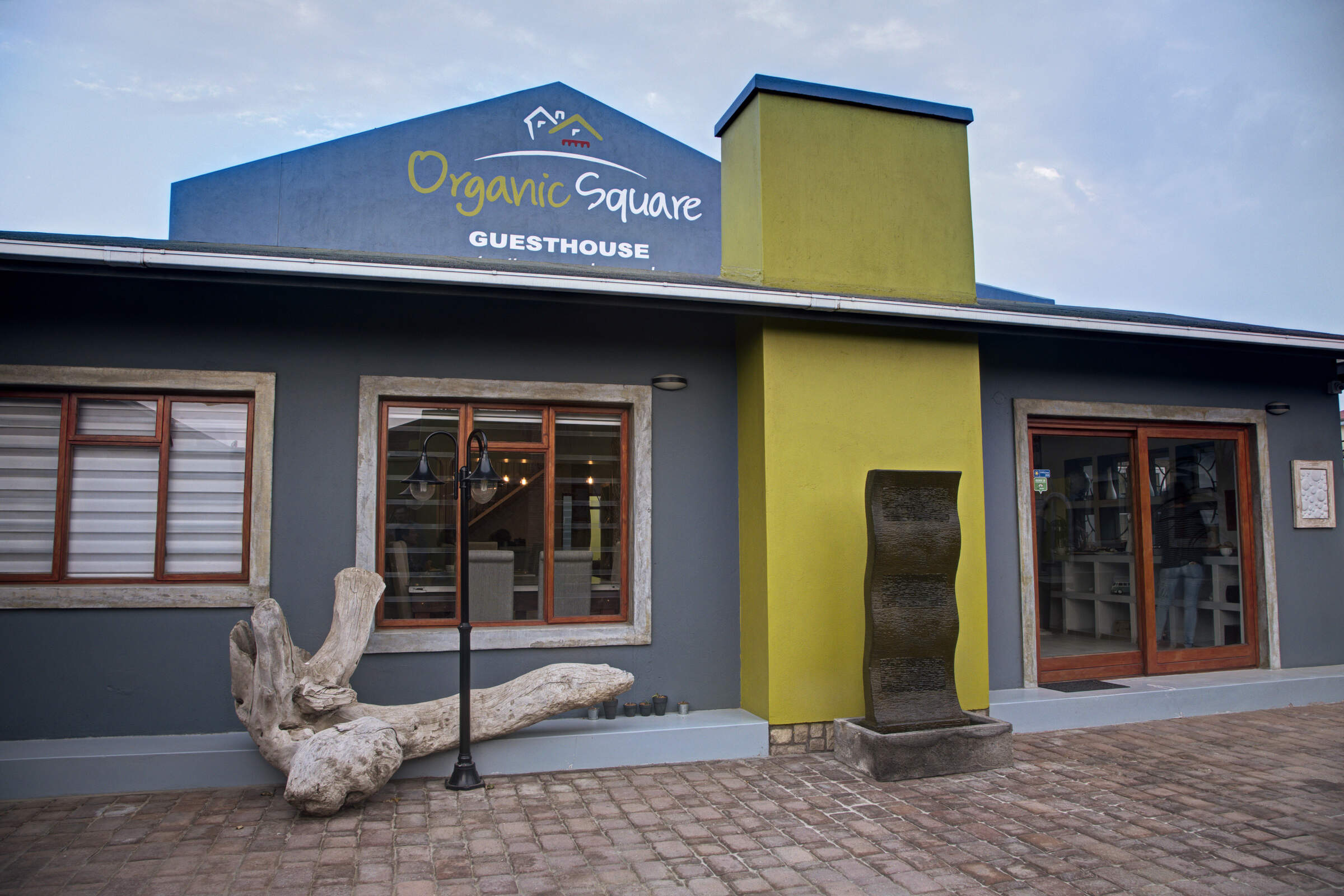
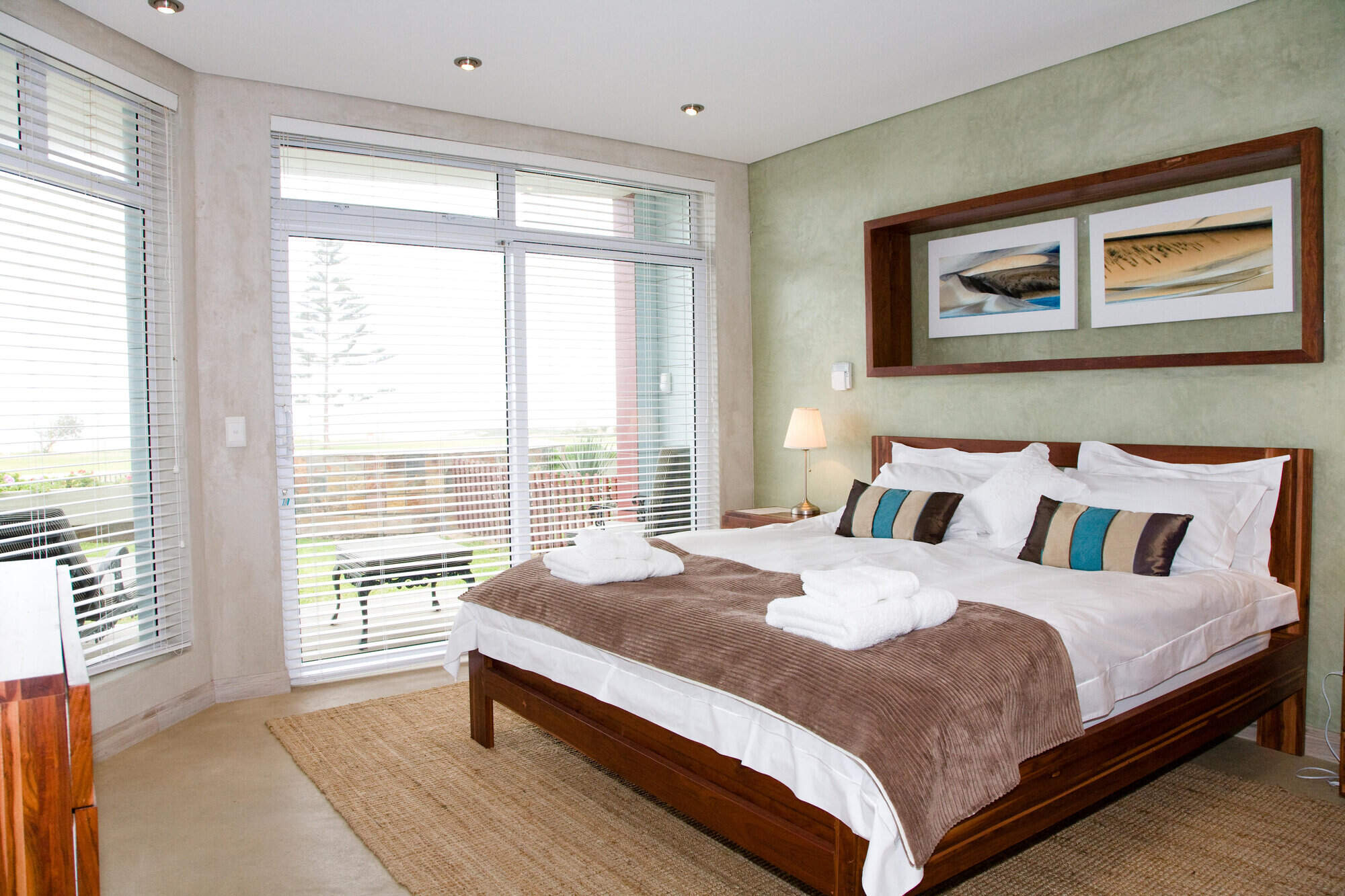
Cornerstone Apartments
Cornerstone Guesthouse’s three self-catering apartments, each in its own unique location, work well for families or groups of travellers seeking space & privacy within a comfortable, contemporary setting.
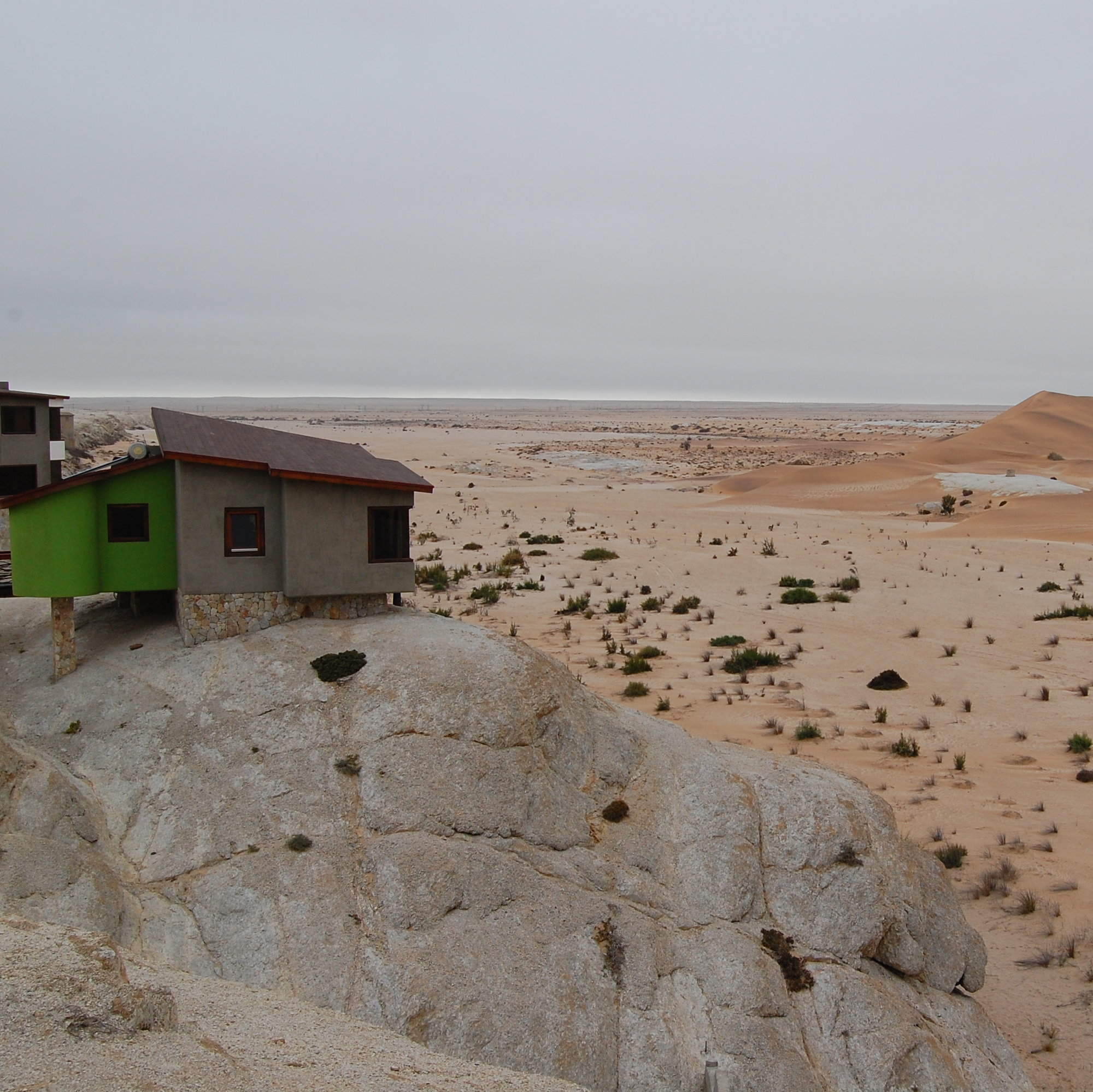
Desert Breeze
Not your typical Swakopmund guesthouse, Desert Breeze occupies a glorious location overlooking the Swakop River and the desert beyond.
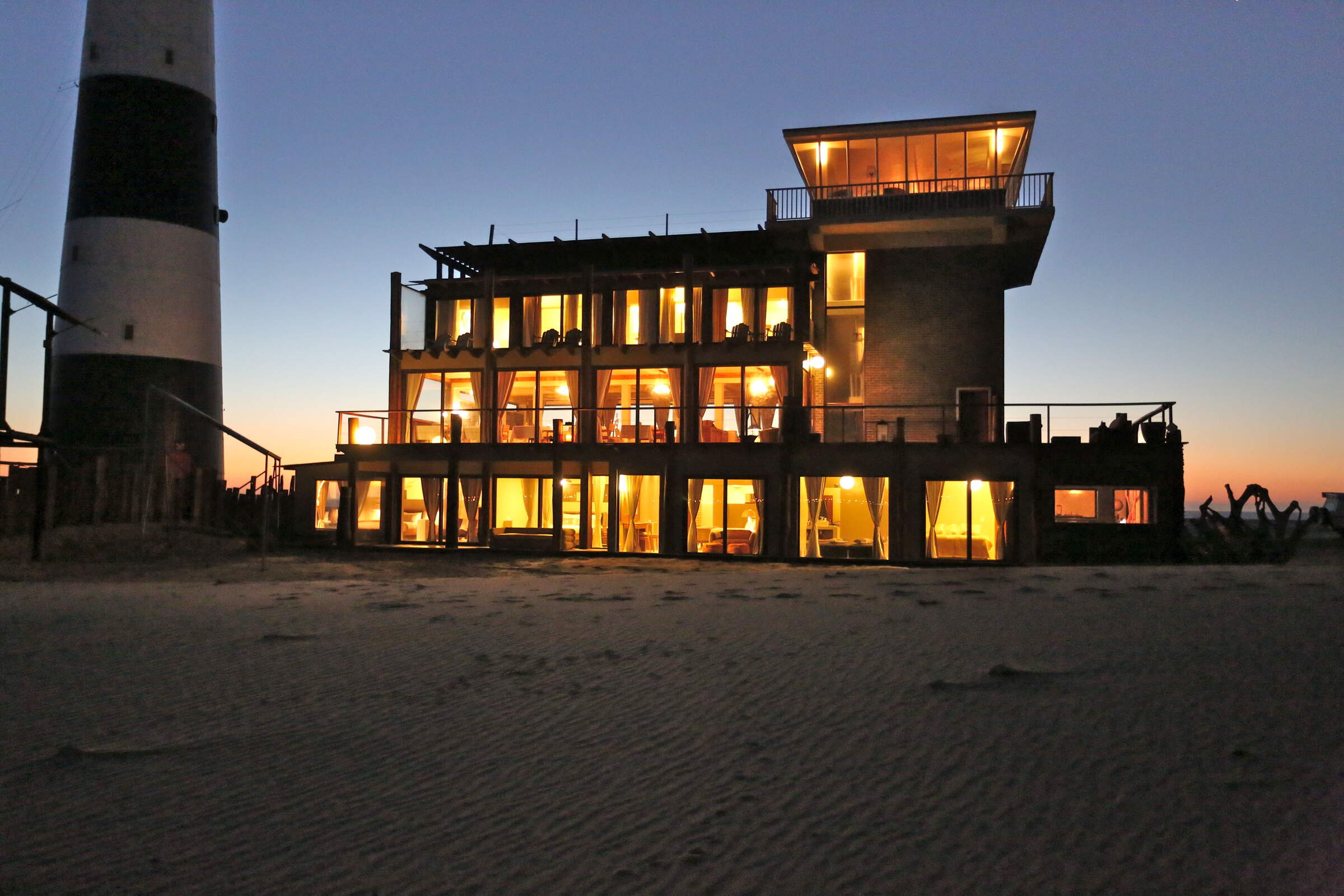
Pelican Point Lodge
Pelican Point Lodge sits on a remote peninsula offering panoramic views of the ocean and is only accessible by 4WD or boat.
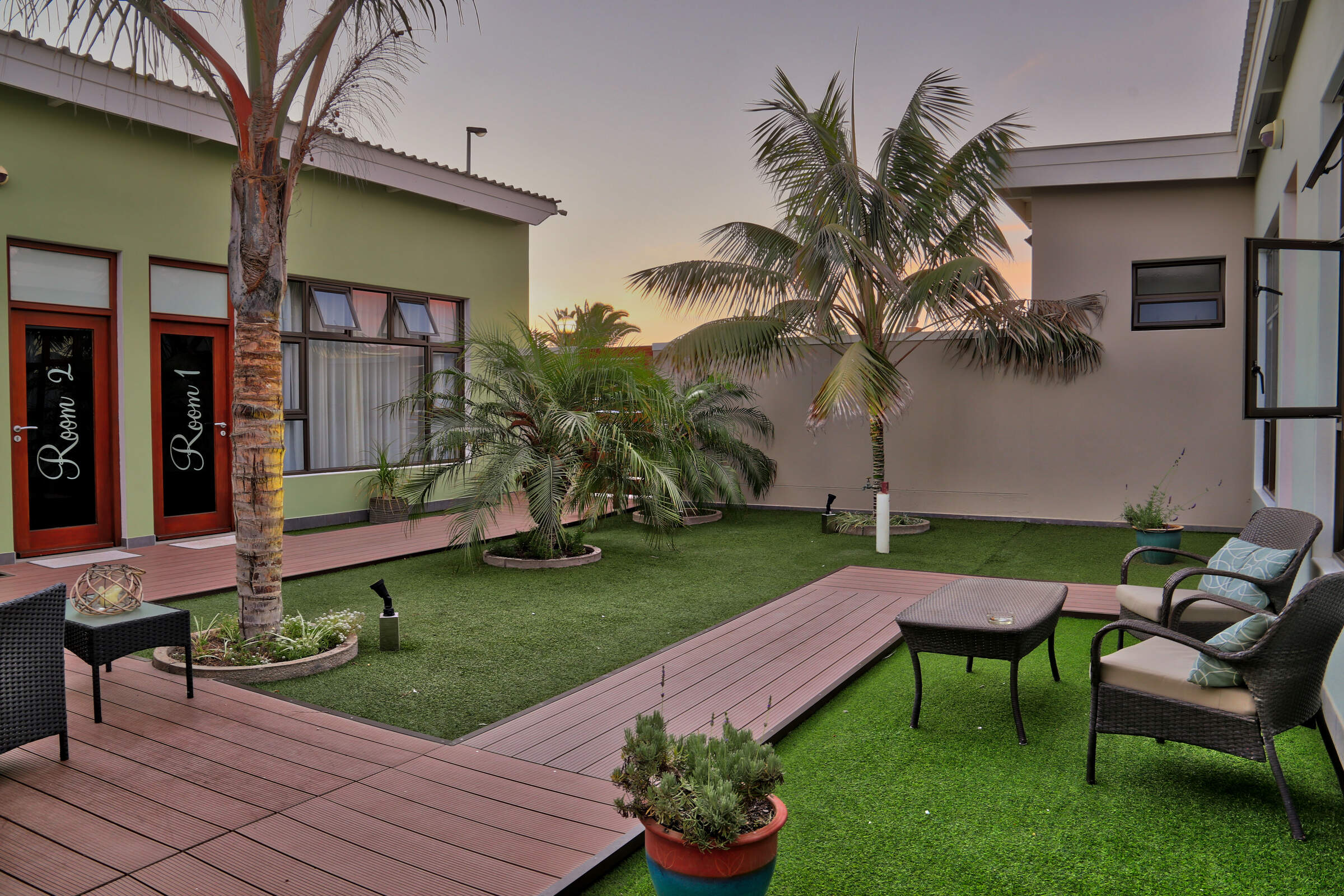
Namib Guesthouse
The Namib Guesthouse is a small, modern B&B, set in Swakopmund's peaceful Kramersdorf area. It's just a short walk from the coast and many amenities.

Oyster Box Guesthouse
Oyster Box Guesthouse is a small, modern and comfortable B&B, overlooking Walvis Bay Lagoon.
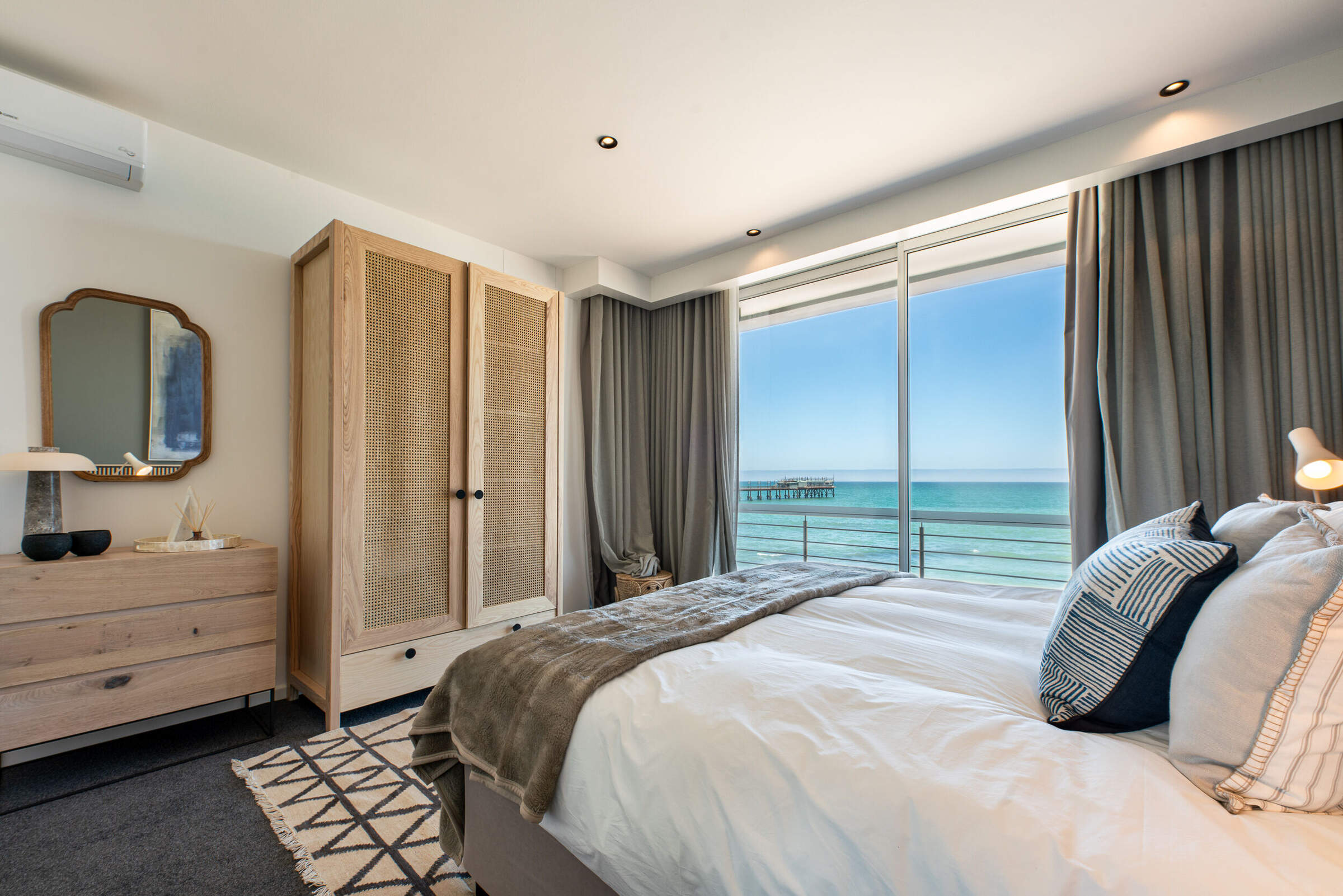
Pearls Beach Pods
With a beachfront location, superb sea views and easy access to the amenities of Swakopmund, The Pearls Beach Pods combine privacy with a high standard of luxury.
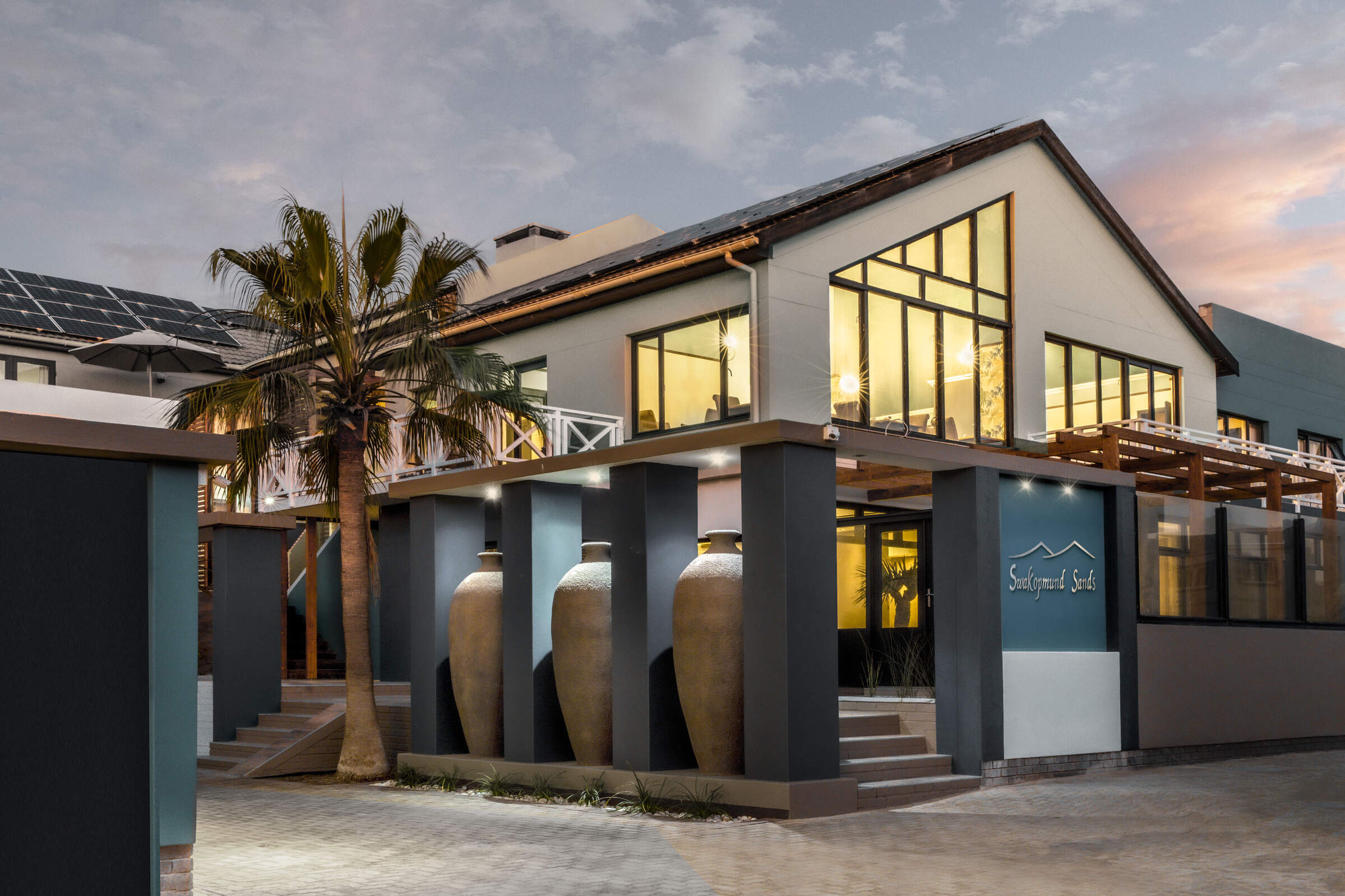
Swakopmund Sands
The relatively substantial Swakopmund Sands Hotel lies in a quiet area of the town, close to the beach yet within walking distance of tourist amenities.
When to go to Swakopmund & Walvis Bay
Swakopmund and Walvis Bay have a mild desert climate with distinct seasons. Summer (December-February) features warm temperatures around 25°C/77°F, occasional rain, and a range of coastal activities. Autumn (March-May) offers pleasant weather, perfect for desert exploration and birdwatching at Walvis Bay Lagoon. Winter (June-August) brings cooler temperatures, frequent fog, and excellent whale watching. Spring (September-November) sees warming temperatures and the return of migratory birds. The Namib Desert offers year-round adventures, while the Atlantic coast provides diverse marine experiences. Click on the months below for a detailed guide.
Jan
Feb
Mar
Apr
May
Jun
Jul
Aug
Sep
Oct
Nov
Dec
Swakopmund & Walvis Bay in January
Swakopmund and Walvis Bay experience their rainy season in January, though precipitation remains minimal in these coastal desert towns. Temperatures hover around 25°C/77°F, with occasional cloudy days. The Namib Naukluft National Park near Swakopmund showcases a refreshing green landscape, contrasting with its usual arid appearance.
Birdwatching is excellent at the Walvis Bay Lagoon, with many species in breeding plumage. Migrant birds are abundant, making it an ideal time for ornithologists. The Cape Cross Seal Colony north of Swakopmund is bustling with activity as seal pups grow rapidly.
While wildlife viewing in the desert areas can be challenging due to dispersed animals, coastal attractions like dolphin watching tours from Walvis Bay are popular.
- Variable coastal weather, often foggy mornings
- Flamingos abundant at Walvis Bay Lagoon
- Peak tourism season, book activities in advance
- Ideal for beach activities and dune exploration
- Marine tours offer chances to see dolphin pods
Our view
This is not a great time to visit
Weather in January
Swakopmund & Walvis Bay in February
February is the wettest month in Swakopmund and Walvis Bay, but rainfall is still limited. Temperatures remain pleasant, averaging 24°C/75°F. The landscape around the towns, including the Moon Landscape in the Namib Naukluft National Park, shows signs of life with sparse vegetation. The Walvis Bay Lagoon teems with flamingos and pelicans, offering spectacular birdwatching opportunities.
February is an excellent time for boat tours from Walvis Bay to spot dolphins and seals. The Swakopmund Museum provides a cool retreat on hotter days, showcasing the region's natural history. Adventure activities like sandboarding on the dunes near Swakopmund are popular, though it's wise to start early to avoid midday heat. The Dorob National Park between the towns offers unique desert-meets-sea landscapes.
- Warm days, cooler nights along the coast
- Bird watching excellent at Walvis Bay Lagoon
- Water sports popular in Swakopmund
- Desert tours showcase unique flora and fauna
- Fewer tourists, but still busy in coastal towns
Our view
This is not a great time to visit
Weather in February
Swakopmund & Walvis Bay in March
As rains taper off, March in Swakopmund and Walvis Bay sees clearer skies and temperatures around 23°C/73°F. The desert landscapes, including the famous Dune 7 near Walvis Bay, are often at their most picturesque.
The Walvis Bay Lagoon remains a hotspot for birdwatching, with many species preparing for migration. Boat tours from Walvis Bay offer chances to see dolphins, seals, and possibly the last of the season's whales. The cooling Atlantic makes beach activities pleasant, and the Swakopmund Jetty offers beautiful sunset views.
March is ideal for exploring the unique flora of the Namib, including the ancient Welwitschia plants.
- Pleasant temperatures, occasional fog patches
- Marine wildlife tours in full swing
- Desert blooms possible after late rains
- Shoulder season begins, rates may decrease
- Fewer tourists visit during March, so rates often low
Our view
A good time to visit, with pros & cons
Weather in March
Swakopmund & Walvis Bay in April
April marks the transition to drier weather in Swakopmund and Walvis Bay, with temperatures around 22°C/72°F.
The Walvis Bay Lagoon sees the arrival of migratory birds, adding to its already rich avian diversity. April is an excellent time for desert tours, including visits to the Moon Landscape and Welwitschia Plains. The Cape Cross Seal Colony north of Swakopmund offers great wildlife viewing as seal pups become more active.
- Cooler weather, ideal for outdoor activities
- Bird migration begins at Walvis Bay Lagoon
- Namib Desert tours offer stunning landscapes
- Easter holidays can bring increased visitors
Our view
A good time to visit, with pros & cons
Weather in April
Swakopmund & Walvis Bay in May
May in Swakopmund and Walvis Bay brings cooler temperatures, averaging around 20°C/68°F, and very dry conditions. The desert landscapes, including the Dorob National Park, offer breathtaking views with exceptional air clarity, perfect for photography. Wildlife viewing in the surrounding areas improves as animals concentrate around water sources.
The Walvis Bay Lagoon remains a prime spot for birdwatching, with both resident and migratory species present. May is an ideal time for scenic flights over the Namib Desert and coast. Adventure activities like sandboarding on the dunes near Swakopmund are popular due to comfortable temperatures.
- Cool, crisp days with frequent morning fog
- Excellent conditions for desert photography
- Whale watching season starts to pick up
- Fewer tourists
- Scenic flights over Sandwich Harbour popular
Our view
A very good time to visit
Weather in May
Swakopmund & Walvis Bay in June
June brings cooler weather to Swakopmund and Walvis Bay, with daytime temperatures around 18°C/64°F and cold nights.
The Walvis Bay Lagoon is excellent for birdwatching, with flamingos and pelicans easily spotted. June marks the start of the whale watching season, with boat tours from Walvis Bay offering chances to see these marine giants. The cooler weather is perfect for desert adventures like quad biking or visiting the Moon Landscape. Sandwich Harbour tours from Walvis Bay showcase the dramatic meeting of desert and sea.
- Cold mornings, mild afternoons on the coast
- Prime time for whale watching excursions
- Dune activities like sandboarding at their best
- Low season, good deals on accommodation
Our view
A very good time to visit
Weather in June
Swakopmund & Walvis Bay in July
July in Swakopmund and Walvis Bay sees cool temperatures, averaging 17°C/63°F, with cold nights.
It's peak season for whale watching, with boat tours from Walvis Bay offering excellent sightings. The Walvis Bay Lagoon teems with birdlife, including large flocks of flamingos. Desert tours to the Namib Naukluft National Park are popular, with the cool weather perfect for exploring dunes and gravel plains. The Cape Cross Seal Colony north of Swakopmund is bustling with activity.
The clear winter skies offer stunning stargazing opportunities in the desert areas around both towns.
- Cold coastal weather, bundle up for activities
- Peak season for marine wildlife viewing
- Desert adventures offer warm daytime escapes
- School holidays bring families to the coast
- Book popular activities well in advance
Our view
A very good time to visit
Weather in July
Swakopmund & Walvis Bay in August
August brings cool, dry conditions to Swakopmund and Walvis Bay, with temperatures around 16°C/61°F. August is peak tourist season, so accommodation can fill up months in advance.
It's prime time for whale watching tours from Walvis Bay, with frequent humpback and southern right whale sightings. The Walvis Bay Lagoon hosts large numbers of flamingos and other water birds. Desert excursions to the Namib Naukluft National Park are popular, with the cool weather ideal for exploring. The Moon Landscape and Welwitschia Plains near Swakopmund offer unique desert scenery. The Cape Cross Seal Colony north of Swakopmund is lively with seal activity.
- Cool coastal climate, warm in the desert
- Excellent month for whale watching tours
- Sandwich Harbour 4WD tours highly popular
- High season continues, expect busy attractions
Our view
Fantastic: the very best time to visit
Weather in August
Swakopmund & Walvis Bay in September
September in Swakopmund and Walvis Bay sees warming temperatures, averaging around 18°C/64°F, with clear skies. It's an excellent month for wildlife viewing, especially whale watching tours from Walvis Bay. The Walvis Bay Lagoon is filled with flamingos and other birds preparing for migration. The Swakopmund Jetty provides beautiful ocean views, especially at sunset. .Sandwich Harbour tours from Walvis Bay showcase the dramatic desert-meets-sea landscape.
September is ideal for exploring the unique flora of the Namib, including the ancient Welwitschia plants. Desert tours to the Namib Naukluft National Park offer spectacular scenery and improved chances of spotting desert-adapted wildlife. Adventure activities like sandboarding and quad biking in the dunes are popular.
- Weather warming up, less morning fog
- Bird migration begins at Walvis Bay Lagoon
- Shoulder season starts, crowds thin out
Our view
Fantastic: the very best time to visit
Weather in September
Swakopmund & Walvis Bay in October
October brings warmer weather to Swakopmund and Walvis Bay, with temperatures around 20°C/68°F. It's the last month for whale watching tours from Walvis Bay, offering final chances to spot these marine giants.
The Walvis Bay Lagoon sees peak flamingo numbers as migratory birds arrive. Desert safaris to the Namib Naukluft National Park are popular, with wildlife congregating around remaining water sources. Adventure activities like sandboarding and quad biking in the dunes are in high demand.
October is ideal for exploring the Moon Landscape and Welwitschia Plains near Swakopmund. Boat tours from Walvis Bay offer opportunities to see dolphins and seals. The Cape Cross Seal Colony north of Swakopmund is bustling with activity as breeding season approaches.
- Warmer days, perfect for beach activities
- Last chance for whale watching this season
- Kayaking with seals popular in Walvis Bay
- Tourism slows, good time for relaxed visits
Our view
A very good time to visit
Weather in October
Swakopmund & Walvis Bay in November
November in Swakopmund and Walvis Bay sees rising temperatures, averaging 22°C/72°F, with occasional cloudy days. The landscape begins to change as the possibility of rain increases.
The Walvis Bay Lagoon is a hive of activity with both resident and migratory birds present in large numbers. Desert tours to the Namib Naukluft National Park offer chances to see wildlife adapting to the changing season. Adventure activities like sandboarding and quad biking remain popular.
The Swakopmund Jetty provides a perfect spot for watching spectacular sunsets. November marks the start of the seal breeding season at the Cape Cross Seal Colony. Boat tours from Walvis Bay provide opportunities to see dolphins and seals in their natural habitat.
- Summer begins, temperatures rise steadily
- Flamingo numbers increase at the lagoon
- Water sports gain popularity in Swakopmund
- Low season offers great value for visitors
Our view
A good time to visit, with pros & cons
Weather in November
Swakopmund & Walvis Bay in December
December brings warmer weather to Swakopmund and Walvis Bay, with temperatures around 23°C/73°F and occasional short thunderstorms. The peak holiday season (20 December to 10 January) brings a festive atmosphere to both towns, with various events and activities.
The desert landscapes, including the Namib Naukluft National Park, may show signs of new life if early rains occur. The Walvis Bay Lagoon is filled with flamingos and other water birds, offering excellent birdwatching. December is peak breeding season at the Cape Cross Seal Colony, with thousands of seals crowding the shore.
Beach activities become popular as temperatures rise. Adventure sports are in high demand. Boat tours from Walvis Bay provide opportunities to see dolphins and seals.
- Warm coastal weather, busy holiday season
- Beach activities in full swing at Long Beach
- Christmas markets enliven Swakopmund streets
- Walvis Bay boat tours offer marine encounters
- Book early for festive season activities
Our view
This is not a great time to visit
Weather in December
Swakopmund & Walvis Bay: In detail
Swakopmund & Walvis Bay
Namibia's two main coastal towns lie barely 30km from one another, and yet are very different indeed. They have remarkably different histories, and are very diverse in feeling. Swakopmund generally makes a more interesting place to stay, with a much better choice of restaurants, hotels and guesthouses, whilst Walvis Bay is the springboard for several super desert trips. Holidays to Namibia usually include a visit to this part of the coast.
Swakopmund overview
Unlike much of Namibia, Swakopmund is used to tourists, and has a wide choice of places to stay and eat, and many things to do. The town has also established a name for itself as a centre for adventure travel, and attracting adventurous visitors seeking “adrenalin” trips, with numerous highly original options, from free-fall parachuting to dune-bike riding and sandboarding. This is still too small to change the town’s character, but is enough to ensure that you’ll never be bored. On the other hand, visit on a Monday during one of the quieter months, and you could be forgiven for thinking that the town had partially closed down!
What to do in Swakopmund
The Mole
If the sun is out The Mole area is generally the place to gather. This was to be a harbour wall when first built, but the ocean currents continually shifted the sandbanks and effectively blocked the harbour before it was finished. The result is a protected area offering a good beach and some relatively safe swimming, although the water can be chilly. There is also a children’s playground, paddling pool and an indoor pool in the beachfront area. There are popular restaurants and cafés nearby.
Museums, galleries and libraries
- Swakopmund Museum: Situated in the old customs building, next to the municipal swimming pool, the main Swakopmund Museum was founded by Dr Alfons Weber in 1951. It now has exhibits on life in the Namib Desert and the South Atlantic, huge collections of insects and birds’ eggs, an excellent section on rocks and minerals, and lots of information on the colonial German history in the region. There’s also a recreation of what old doctors’ and dentists’ surgeries must have been like.
- Sam Cohen Library: Next to the Transport Museum, the impressive collection of Africana books at the Sam Cohen Library contains about 10,000 volumes, encompassing most of the literature on Swakopmund, and a huge archive of newspapers from 1898 to the present day (some in German, some in English). There’s also a collection of old photographs and maps.
- Living Desert Snake Park: The Snake Park boasts more than 25 types of Namibian snakes, lizards, chameleons, scorpions and other creatures, which is enough to satisfy even the most inquisitive child – or adult. The animals are kept under glass in two small rooms, where snake feeding takes place on Saturdays from 10.00am to 12.30pm. Outside, a small but pleasant garden incorporates plants from the Namib.
- Kristall Galerie: The Kristall Galerie, housed in an ultra-modern building, claims to hold the largest-known crystal cluster in the world, estimated to be around 520 million years old. Displays include a scratch pit where visitors can search for semi-precious stones, a replica of the original Otjua tourmaline mine, and a craft area. There’s a shop, of course, with semi-precious stones available in many guises, and a café area with videos about crystals. It’s well worth a visit by anyone fascinated by geology.
Swakopmund has become a hub for adventure sports, which include sky-diving, dune-boarding and quadbiking. So if you’re after some adrenalin in your holiday, this is a good place to head to.
Walvis Bay overview
Although a small-town feel still prevails, Walvis Bay has changed fast in recent years, reflecting the town’s expanding population and its increasing popularity with visitors keen to stay near the lagoon. Alongside lots of new development, both industrial and commercial, several new hotels, restaurants and bed and breakfasts have sprung up.
What to see and do in Walvis Bay
Boat trips
A few companies run excellent boat trips from the harbour around the lagoon and out to Pelican Point and Bird Island, with catamaran trips an additional option. Trips usually start from the yacht club at around 8.30am, and vary from short cruises in the lagoon to longer cruises round the harbour and out to Pelican Point, or birdwatching trips further out to sea. Many operators include elaborate snacks that may include oysters or a seafood platter, with sparkling wine.
In October and November, whales frequent these waters, with possible sightings of humpback, southern right, Minke and even killer whales, while from then until April there is the chance of seeing the leatherback turtle. Dolphins – both the bottlenose and the endemic Benguela (Heavyside’s) – are present all year round, as are Cape fur seals, which may often cavort around the boats.
Kayaking in Walvis Bay
Kayaking is a superb way to get close to birdlife and marine mammals. You might expect a muscle-bound, juvenile guide, but instead you will be guided by the delightful Jeanne Meintjes – a relaxed, mature local woman whose hobby is now a small business. Jeanne’s trips run in the early morning, when the water is flat. No kayaking experience is necessary, and you don’t need to be athletic: just meet Jeanne in Walvis Bay, and she will supply all the equipment: warm jackets, waterproof shoes and dry bags for cameras. Participants have a choice between a single or double kayak.
Trips start with a 4WD drive through working saltpans to launch the kayaks beside the seal colony, at Pelican Point. The kayaking is usually gentle, lasting two to three hours before you pause on the beach for sandwiches and a drink. On the water, inquisitive seals often come close, playing and splashing around, whilst further out you’ve a chance of spotting dolphins and whales. This is a blissful way to spend a morning.
Around the towns
Action in the dunes
New activities in the dunes are constantly being dreamed up to add to the existing range, and others dropped as they prove less of a draw. Some, such as quadbiking, skydiving and sandboarding, may be combined in one trip. Current options include:
- Sandboarding: Typically, trips leave from Swakopmund in the morning, collecting you from your accommodation. Participants are supplied with a large flat piece of masonite/hardboard, plus safety hats, elbow guards and gloves. The idea is to push off the top of a dune, and lie on the board as it slides down. First you’ll do a few training rides on lower dunes, where you won’t go much faster than 40km/h. Then they take you to a couple of the larger dunes, for longer, faster runs at speeds that can easily reach 70km/h or more, before lunch in the desert, and the return drive to Swakopmund.
As a spin-off from sandboarding, stand-up boarding, also known as dune-boarding, uses a modified snowboard. It may have more finesse than sandboarding, and certainly requires more skill. - Quad-biking: Riding four-wheel motorcycles through the dunes is organised by a number of companies. Manual, semi-automatic and automatic bikes are available, with helmets, goggles and gloves provided.
With clear air and a starkly beautiful coastline, Swakopmund is a natural space to learn to fly or even skydive – and tandem skydives for novices are available. After a basic safety chat and a scenic flight over Swakopmund and the surrounding area, you are strapped to an experienced instructor to throw yourself out of a plane at 10,000ft. Your free-fall lasts for about half a minute before, hopefully, your parachute opens and there’s a further five-minute “canopy ride” before landing. There is no age limit, but for safety reasons, participants are limited to those who are physically large enough to fit the equipment.
For a further adrenalin rush you can take an aerobatic flight and experience loops, rolls and the classic Cuban 8 manoeuvre. The two-seater Chinese-built CJ6 aircraft has a sliding canopy for that 'wind-in-your-hair' feeling and there is an intercom for communication with the pilot, who will warn you before each manoeuvre. Should you become faint hearted part way through, the pilot will stop the death-defying plunges and take you on a sedate scenic flight instead. For a more leisurely aerial experience, try a champagne breakfast balloon flight over the desert. The breathtakingly early 05:00am pick-up time is offset by flights over areas such as Rössing Mountain and the ocean dunes. The more intrepid can try their hand at the 1,100m flying fox at Rössing Mountain, a trip which includes a 4WD journey to the top through spectacular mountain scenery. Booking is essential; you cannot just turn up.
Scenic flights, including trips up to the Skeleton Coast, can be organised through a number of operators. Prices fluctuate in line with exchange rates, because the cost of fuel is linked to the US dollar. It’s worth booking in advance, since that gives companies the chance to fill flights, thus keeping the costs down.
Action at sea
- Fishing: Long popular with South African visitors, fishing is good all year round all along this coastline, although the best times are October to April. The turn of the year is particularly busy, with anglers arriving in search of big-game fish such as copper sharks and other similar species, which can weigh as much as 180kg. Other species that may be caught include kabeljou, steenbras, barber, galjoen and garrick.
The area is good for crayfish, too, though the catch is limited to a maximum of seven per person, or 14 per vehicle. Permits are required for all types of fishing. Several local tour operators specialise in fishing, either from the beach or by boat, but watch out for operators who may be less environmentally aware. - Watersports: Walvis Bay is the place to head for to try out watersports that include kitesurfing and windsurfing. Tuition is mainly one-to-one, and is tailored to the individual – and the weather.
Exploring the coast
Swakopmund is home to some of Namibia’s best guides who have a wealth of in-depth knowledge on the area’s flora, fauna and geology. Join a small group, typically no more than eight people, to explore by 4WD and on foot – on trips that can bring Namibia’s coastal desert alive for you.
The Sandwich Harbour trip is by far the most popular, and includes historic sites in the Kuiseb Delta, bird-rich lagoons at Walvis Bay and Sandwich Harbour (tide permitting), and some of the desert’s more unusual flora and fauna.
The Welwitschia Drive is a route through the desert with numbered beacons at points of interest, culminating in one of the country’s oldest Welwitschia plants. Part of the drive is the “moon landscape”, or “moonscape” – a rolling, barren area of rocky desert formed by the valleys around the course of the Swakop River. It’s a spectacular sight, often spoken of, and best viewed by the slanting light of mid morning or late afternoon.
The Namib trip explores the Swakop and Khan River valleys, including some historical sites from World War I, considerable desert wildlife and the Moon Landscape – with Welwitchia plants.
Both trips start at about 8:30am at your hotel, and end around 5:00pm; a delicious lunch is included, usually served at a magnificent spot in the desert. Private trips, tailored to guests’ interests, are easily arranged.
Birdwatching and other wildlife
Swakop River Delta
Here small tidal lagoons surrounded by reeds are very good for birding. Expect whimbrels, curlews, the odd flamingo and pelican, white-breasted cormorants, Cape cormorants, black-winged stilts, avocets, and more.
The remains of the old railway bridge lie here, washed down in 1934 when the Swakop River performed its flood-of-the-century stunt. On the pillars there are often crowned and bank cormorants, while along the riverbed, between the tamarisk trees, kestrels swoop around catching mice.
The local Wildlife Society has laid out a pleasant 4km trail starting next to the cemetery. This takes you downstream into the river mouth, and back to the beach. Walkers should beware of quadbikes that move pretty fast through this area.
Kuiseb Delta
This fascinating area is criss-crossed by a labyrinth of tracks in which even experienced guides sometimes get lost. Various unmarked archaeological sites dot the area, where pottery shards, beads, shell middens and stone tools can be seen. The wildlife found here includes springbok, ostrich, jackal and brown hyena, and many birds including the endemic dune lark.
Look out for the nara bushes, Acanthosicyos horrida – their spiky green (and hence photosynthesising) stems have allowed them to dispense with leaves completely. This is an advantage given the propensity of leaves to lose water. Naras are perhaps not truly desert plants for their roots go down many metres to reach underground water, which they need in order to survive. From February to April and August to September the local Topnaar people harvest nara melons here.
Sandwich Harbour
The small Sandwich Harbour area about 45km south of Walvis Bay contains a large saltwater lagoon, extensive tidal mudflats, and a band of reed-lined pools fed by freshwater springs – which together form one of the most important refuges for birdlife in southern Africa. Typically you’ll find about 30 species of birds at Sandwich at any given time. It offers food and shelter to countless thousands of migrants every year and some of the most spectacular scenery in the country – for those visitors lucky enough to see it.
Map of Swakopmund & Walvis Bay
Choices for where to stay in Swakopmund & Walvis Bay
Swakopmund & Walvis Bay: Holidays
Namibia’s two main coastal towns, Swakopmund and Walvis Bay, share the same stretch of coastline – but have very little in common in terms character. Visit ‘Swakop’ for a wider range of hotels and restaurants, and Walvis Bay for some great birdwatching opportunities. Both towns offer a wide variety of activities, including, kayaking with Cape fur seals, birdwatching excursions and drives around the sand dunes. For the more adventurous, there is a whole host of extreme sports for you to try your hand at, such as sandboarding or skydiving (to name a few!). A holiday to Swakopmund and Walvis Bay works nicely as part of a tour visiting other areas of Namibia, as you can see in our Trip Ideas below.

Caracal Self-drive Safari
14 days • 8 locations
WINDHOEK AIRPORT TO WINDHOEK AIRPORT
The quintessential Namibian self-drive adventure exploring the highlights from Sossusvlei and the Namib Desert to Damaraland’s wilderness and a safari in Etosha. A great mix of accommodation and excellent value.
US$3,200 - US$4,010 per person

Black Wildebeest Self-drive Safari
19 days • 10 locations
CAPE TOWN AIRPORT TO WINDHOEK AIRPORT
Journey from South Africa’s cosmopolitan Cape Town to central Namibia’s Okonjima Nature Reserve during this self-driven safari. The route passes through a stunning variety of landscapes, offering access to this beautiful continent’s rich diversity.
US$4,030 - US$4,130 per person

Cape Fox Guided Safari
13 days • 7 locations
WINDHOEK AIRPORT TO WINDHOEK AIRPORT
A classic clockwise circuit around Namibia’s northern highlights with a private guide and vehicle. We can’t think of a better way to see more in this timeframe.
US$11,130 - US$12,960 per person

Namaqua Chameleon Self-drive
12 days • 7 locations
WINDHOEK AIRPORT TO WINDHOEK AIRPORT
A classic 12-night self-drive adventure around the highlights of eastern and northern Namibia taking in Sossusvlei, Swakopmund, Damaraland, Etosha and a final stop at Okonjima. Comfortable lodges and great value.
US$3,940 - US$4,990 per person

Pelican Fly & Drive Safari
10 days • 5 locations
WINDHOEK AIRPORT TO WINDHOEK AIRPORT
A unique itinerary visiting the must-see highlights combining the adventure of a classic Namibian self-drive with the ease and spectacular views of a fly-in safari.
US$7,330 - US$8,340 per person

Brown Hyena Self-drive
14 days • 8 locations
WINDHOEK AIRPORT TO WINDHOEK AIRPORT
The perfect trip for those who want to mix the adventure and freedom of a self-drive with some of our favourite luxury camps in Namibia and a great mix of activities.
US$8,710 - US$9,610 per person
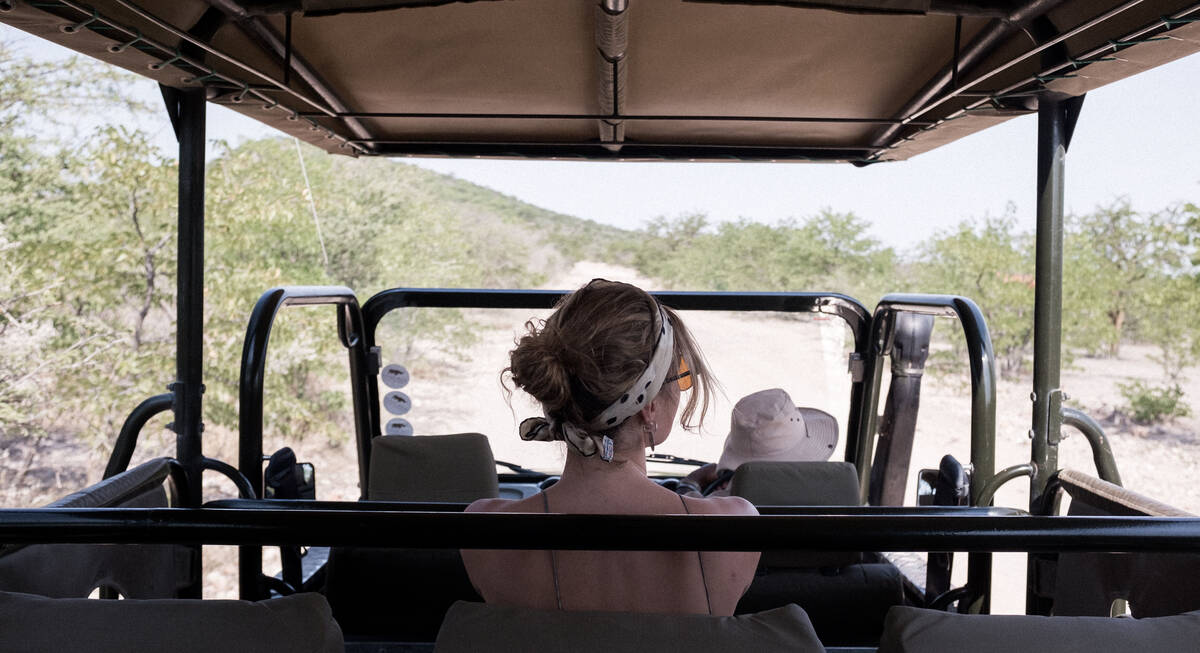
Rock Agama Self-drive Safari
9 days • 6 locations
WINDHOEK AIRPORT TO WINDHOEK AIRPORT
Big on experience and light on time, this self-drive trip packs in Namibia’s highlights while staying in a selection of luxury camps and lodges for an unforgettable 10 days.
US$9,060 - US$13,900 per person

Rock Hare Self-drive Safari
20 days • 12 locations
WINDHOEK AIRPORT TO VICTORIA FALLS AIRPORT
An in-depth look at Namibia from the Namib Desert to the Caprivi, with additional stops in Botswana and Victoria Falls. This three-week adventure includes an unrivalled mix of environments and is great value.
US$7,230 - US$8,170 per person

Quiver Tree Self-drive Safari
14 days • 7 locations
WINDHOEK AIRPORT TO WINDHOEK AIRPORT
An offbeat Namibian self-drive adventure exploring the epic Fish River Canyon and fascinating Kolmanskop ghost town in the south, before turning north via the classic highlights of Sossusvlei, Swakopmund and Damaraland.
US$3,370 - US$3,570 per person

Black-faced Impala Guided Safari
13 days • 6 locations
WINDHOEK AIRPORT TO WINDHOEK AIRPORT
A unique mix of luxury and adventure in our original, and perhaps most varied, destination on a privately guided Namibian overland safari. Perfect for families, friends or couples travelling together.
US$13,020 - US$15,180 per person
Our best 21 hotels and places to stay in Swakopmund & Walvis Bay
In this area various establishments are divided into hotels, pensions and bed and breakfasts, backpacker’s lodges, restcamps and camping. Ask us for more details of what's where, and what's likely to suit you best!

Cornerstone Guesthouse
Cornerstone Guesthouse is a small friendly B&B in a peaceful residential area. It's just a short walk from Swkopmund's waterfront & amenities.

Sam's Giardino
Welcoming, professionally run, and mildly eccentric, Sam’s Giardino lifts the level of hospitality in Swakopmund to unusual heights.

Strand Hotel
One of the larger hotels in Swakopmund, the Strand is well-placed on the seafront with good access to restaurants and the centre of town.

The Stiltz
Not your typical guesthouse, The Stiltz occupies a glorious location over the Swakop River on the edge of Swakopmund.

Villa Margherita
Villa Margherita is a beautifully renovated B&B in the heart of Swakopmund, with comfortable, well-appointed rooms, and friendly and attentive staff.

Beach Lodge
Right on the sea front, Beach Lodge offers good standard accommodation and its own restaurant, 15 minutes’ drive from Swakopmund.

Lagoon Lodge
Lagoon Lodge is a quirky little guesthouse located right on the edge of Walvis Bay Lagoon, a good spot for watching the flamingoes that frequent the area.

The Delight
Colourful and contemporary in style, The Delight is a relatively large hotel within a short walk of Swakopmund's waterfront, restaurants and main attractions.

Swakopmund Guesthouse
Swakopmund Guesthouse is a family-run B&B, boasting comfortable and high-quality rooms with a maritime touch.

Brigadoon
In a quiet residential location, Brigadoon is conveniently located for the Swakopmund waterfront and amenities.

Hansa Hotel
With a very central location in Swakopmund, the traditional Hansa Hotel is reliably good, though it is quite formal.

Secret Garden
Secret Garden Guesthouse is well located in the centre of Swakopmund not far from the sea. With a seaside feel, it has its own small restaurant and bar.
Excursions in Swakopmund & Walvis Bay
Optional, extra day-trips and excursions that are possible while you’re staying in Swakopmund & Walvis Bay. Talk to us: these excursions are usually best arranged before you go.
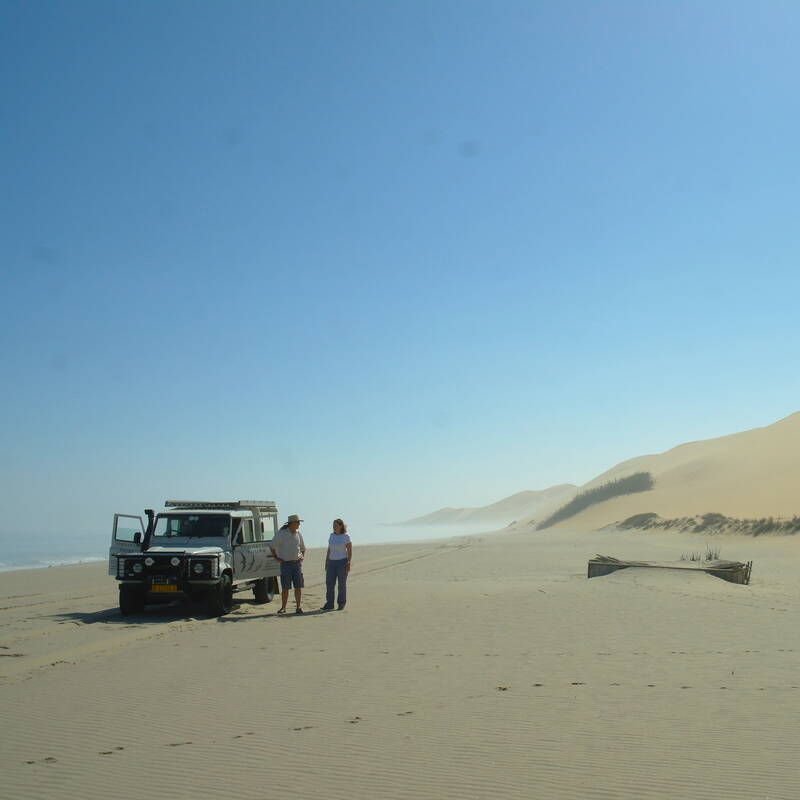
Coast and Sandwich Harbour
Full day
Experience this usually inaccessible part of the Skeleton Coast, where the dunes of the Namib plunge into the Atlantic Ocean. One of our top recommendations, this is an adventurous 4WD trip, guided by experts. You'll explore the Kuiseb Delta and (tides permitting) traverse dunes and the beach to reach Sandwich Harbour, a remote freshwater lagoon with abundant birdlife.
More about Coastal tour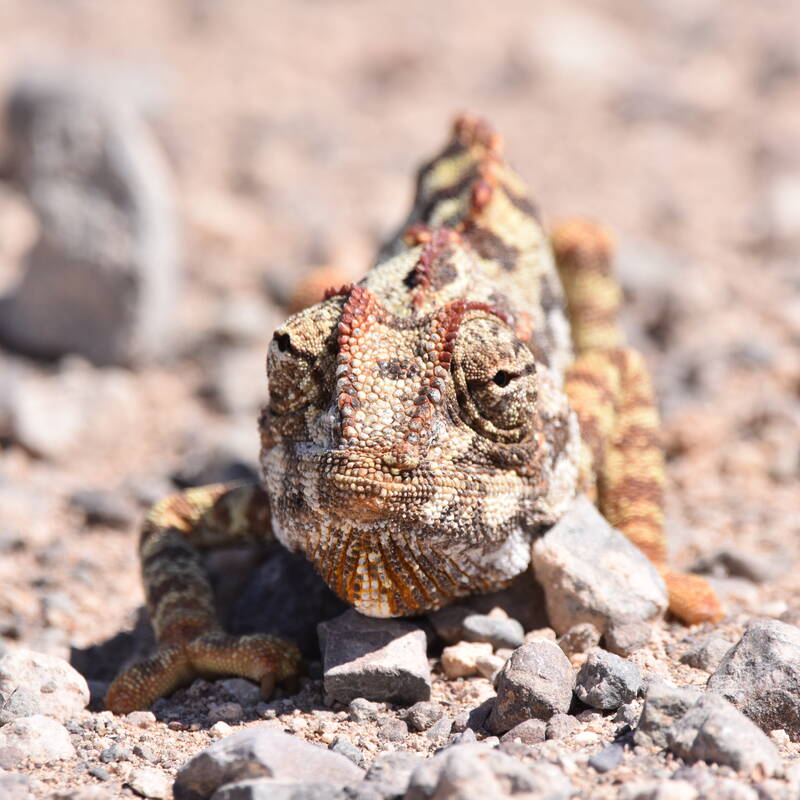
Desert tour
Variable, depending on the tour
Discover the unexpected on a trip into the desert surrounding the coastal towns of Swakopmund and Walvis Bay. A must for wilderness lovers, this extraordinary landscape encompasses the Welwitschia Plains, sculpted dunes, the magic of the Kuiseb Delta – and much more. There are plenty of options, each with its own unique focus.
More about Desert tour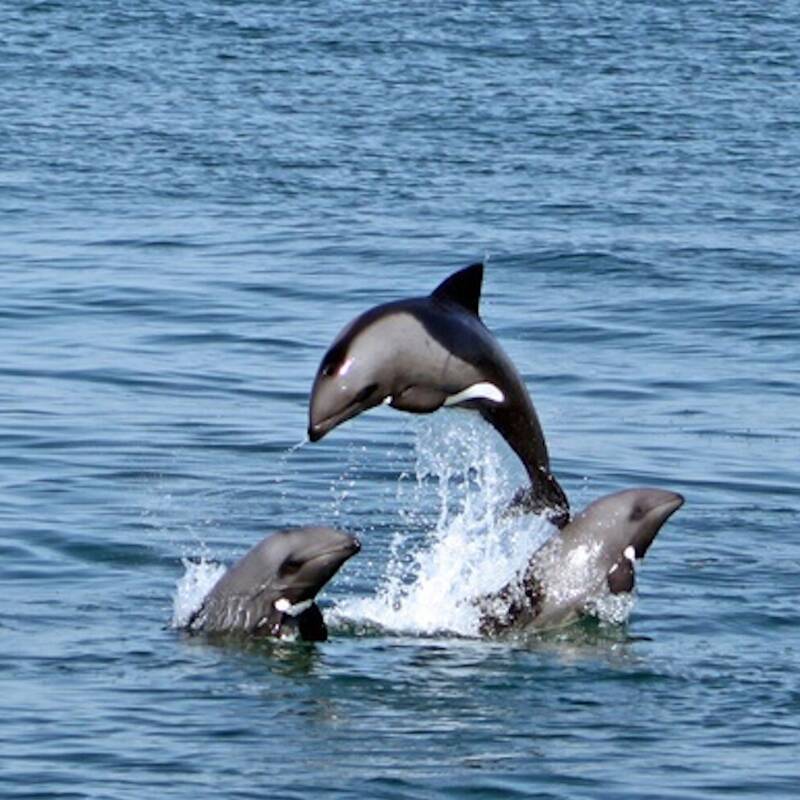
Dolphin and seal cruise
Half-day inc brunch
A boat cruise around Walvis Bay lagoon is a must for lovers of wildlife and the great outdoors. Seek out the ‘marine big five’ – from Cape fur seals to bottlenose dolphins – and marvel at the range of bird species for whom this haven on the Skeleton Coast is home. Then round off the morning with an oyster brunch.
More about Dolphin & seal cruise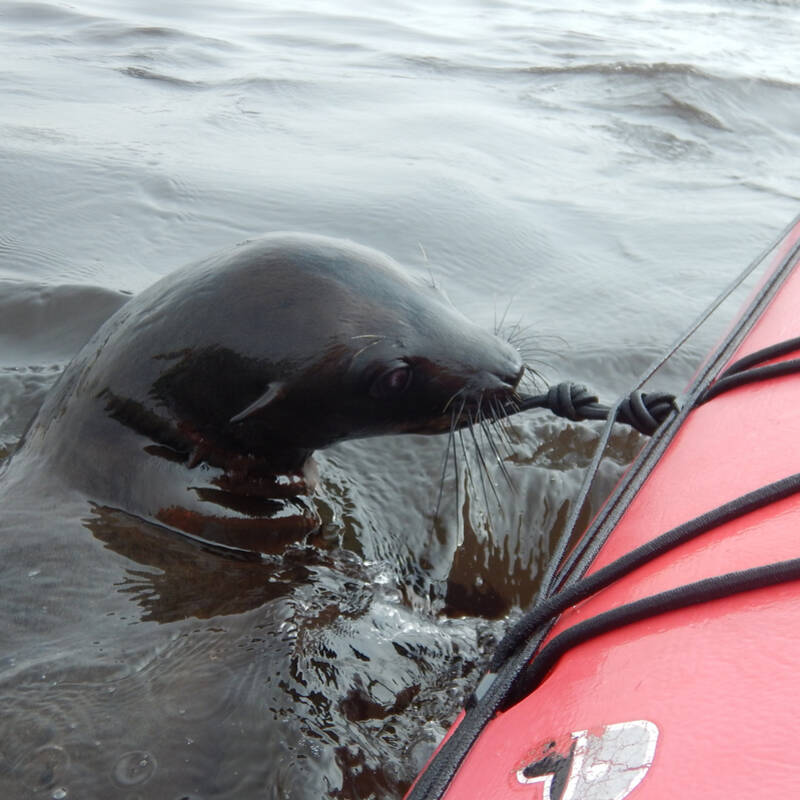
Kayaking with seals
Morning incl. tea, coffee & sandwiches
Get up close and personal with a colony of Cape fur seals on a kayaking excursion from Walvis Bay. Enjoy a gentle morning’s paddle in Walvis Bay Lagoon as seals surround and interact with you and your kayak. If you’re lucky you may even catch a glimpse of some Heaviside’s or bottlenose dolphins.
More about Kayaking with seals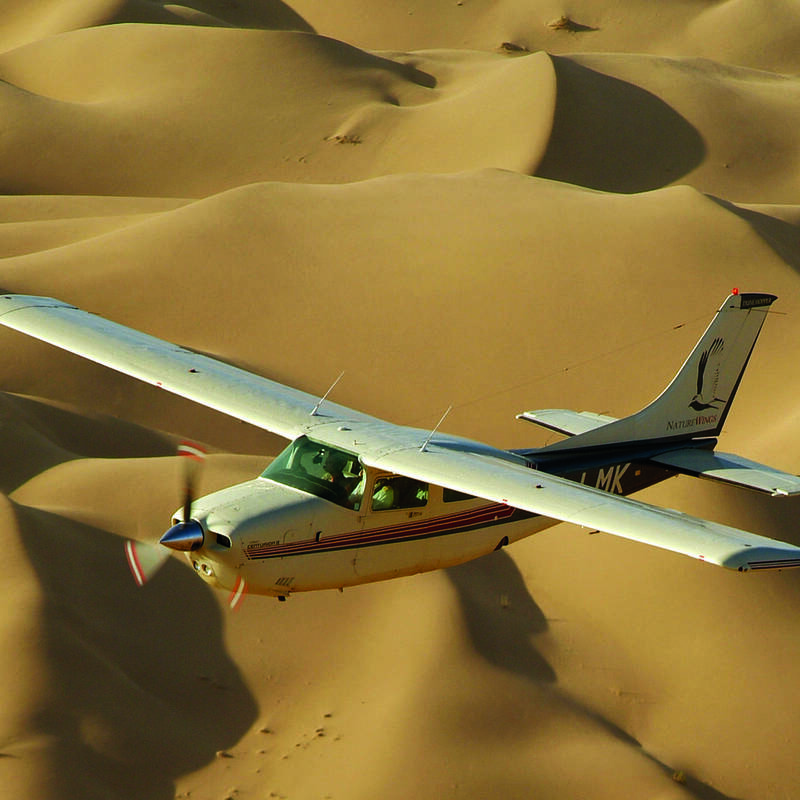
Scenic flights in Namibia
Variable, depending on the flight
Namibia is famed for its stark beauty and boundless desert vistas and there is no better way to soak these in than from the air. A scenic flight gives you a unique perspective on this stunning and varied country, and may even provide a bird’s-eye view of areas that are out of reach to those restricted to terra firma.
More about Scenic flights
Looking for inspiration on where to travel next?
Visit our trip chooser to explore your options and find inspiration for your perfect African adventure
Inspire meVideos from Swakopmund & Walvis Bay
Watch these videos to learn more about Swakopmund & Walvis Bay
